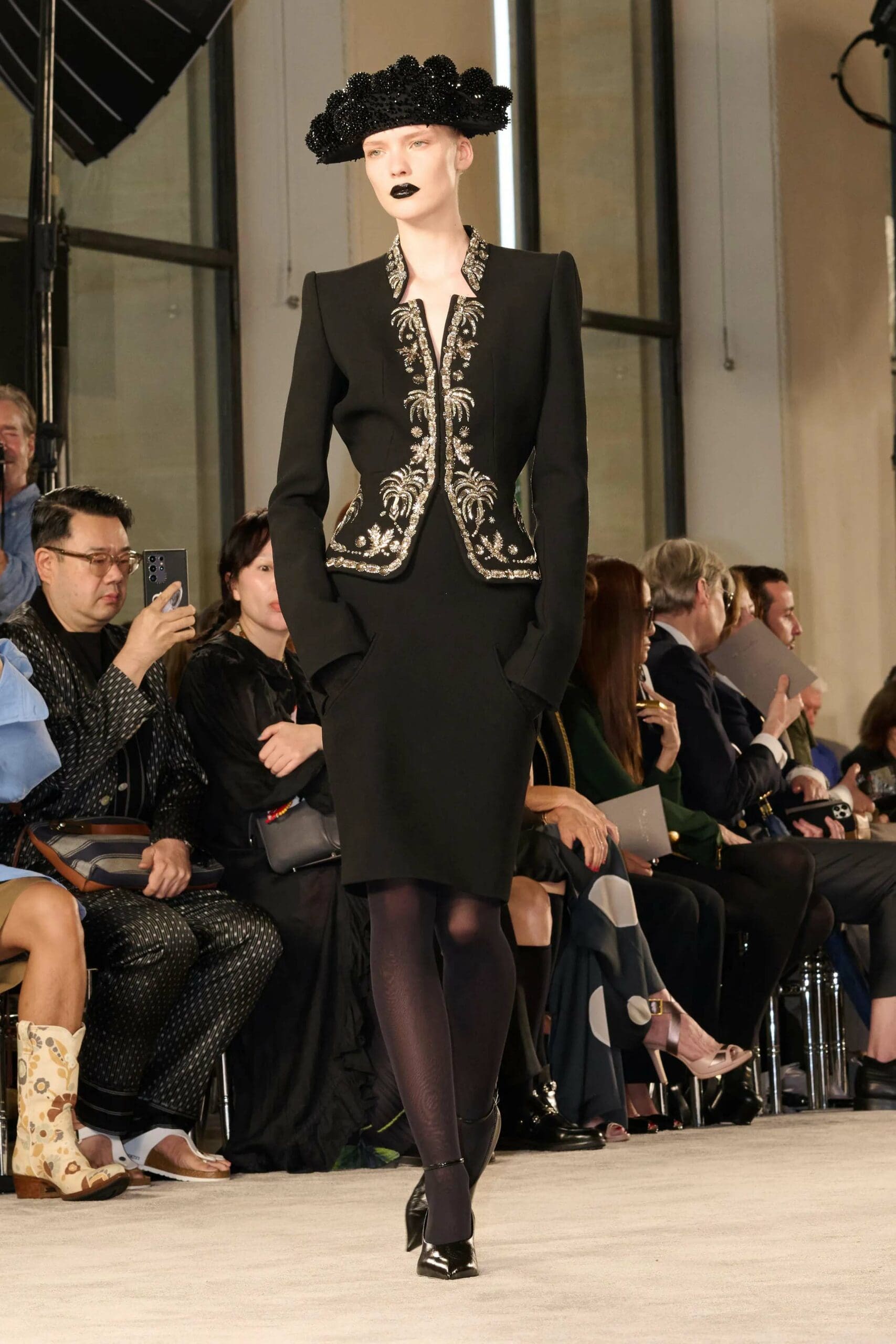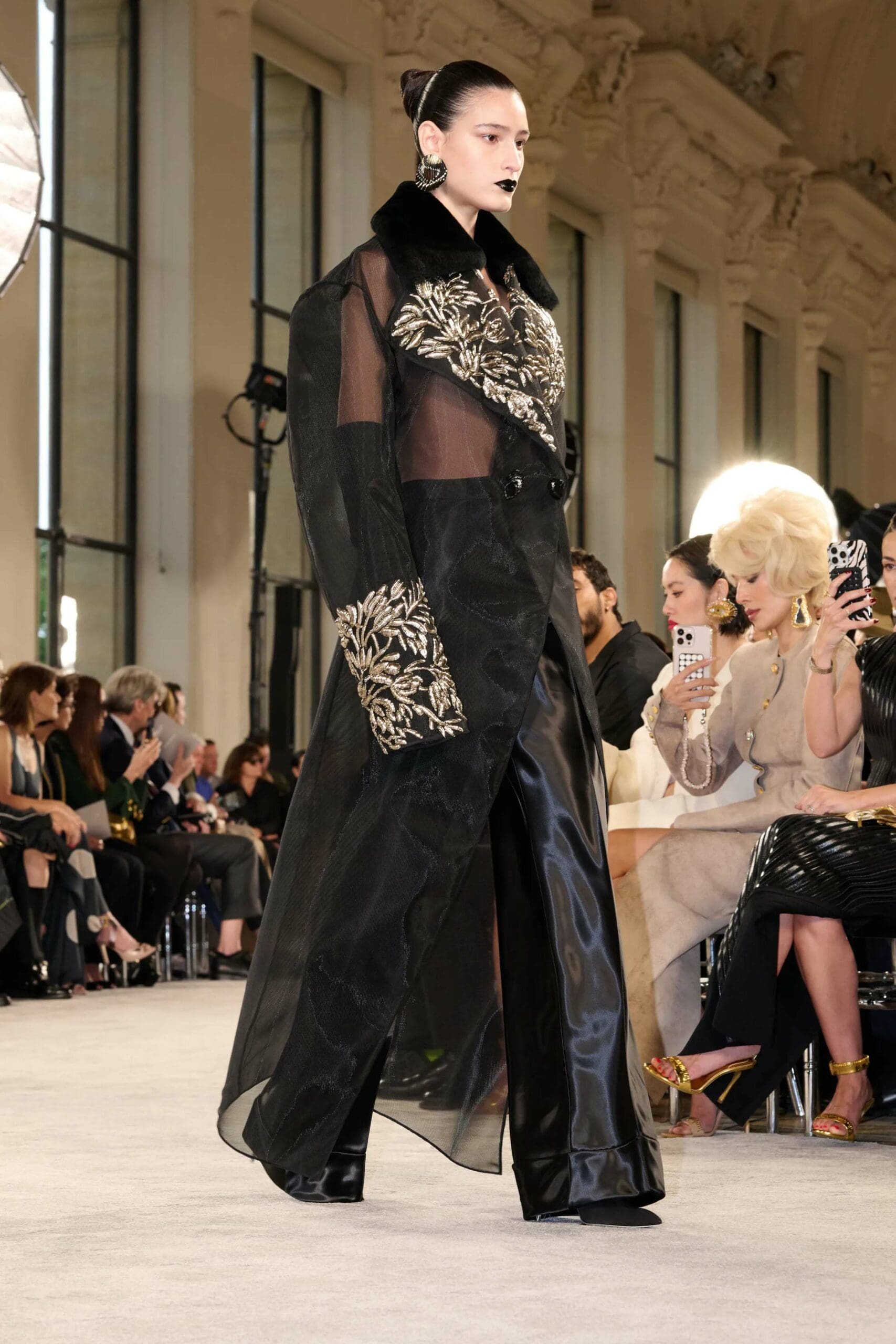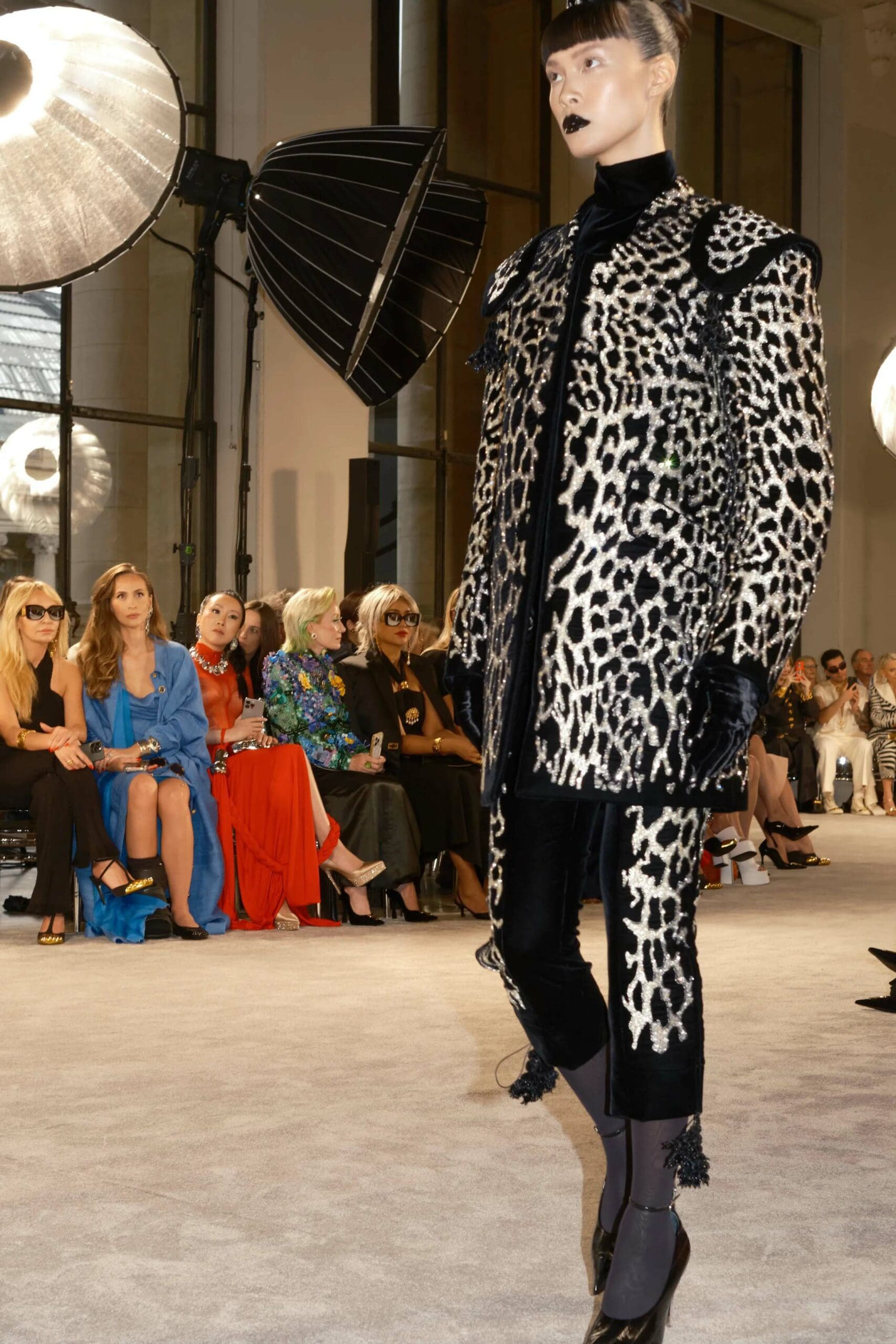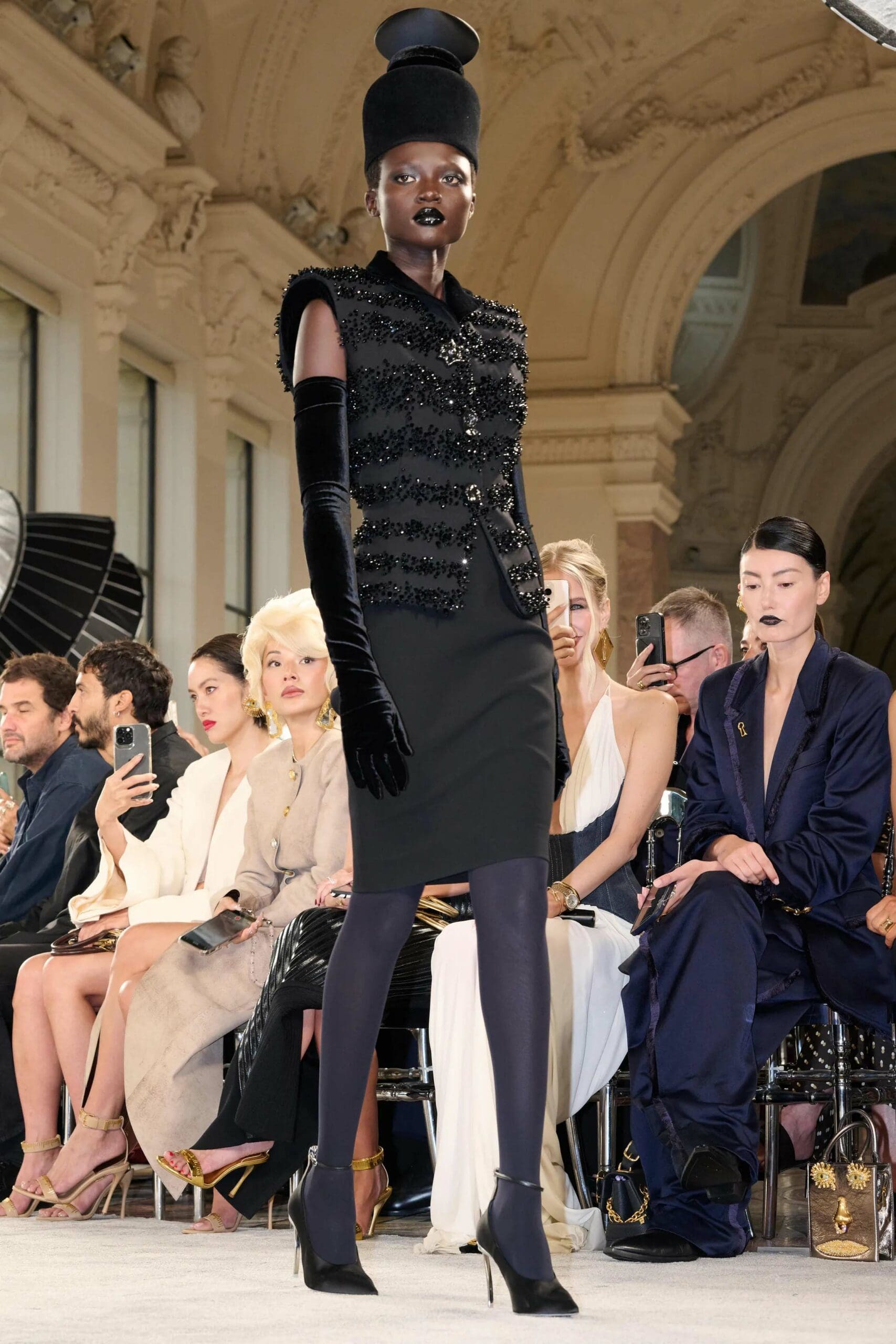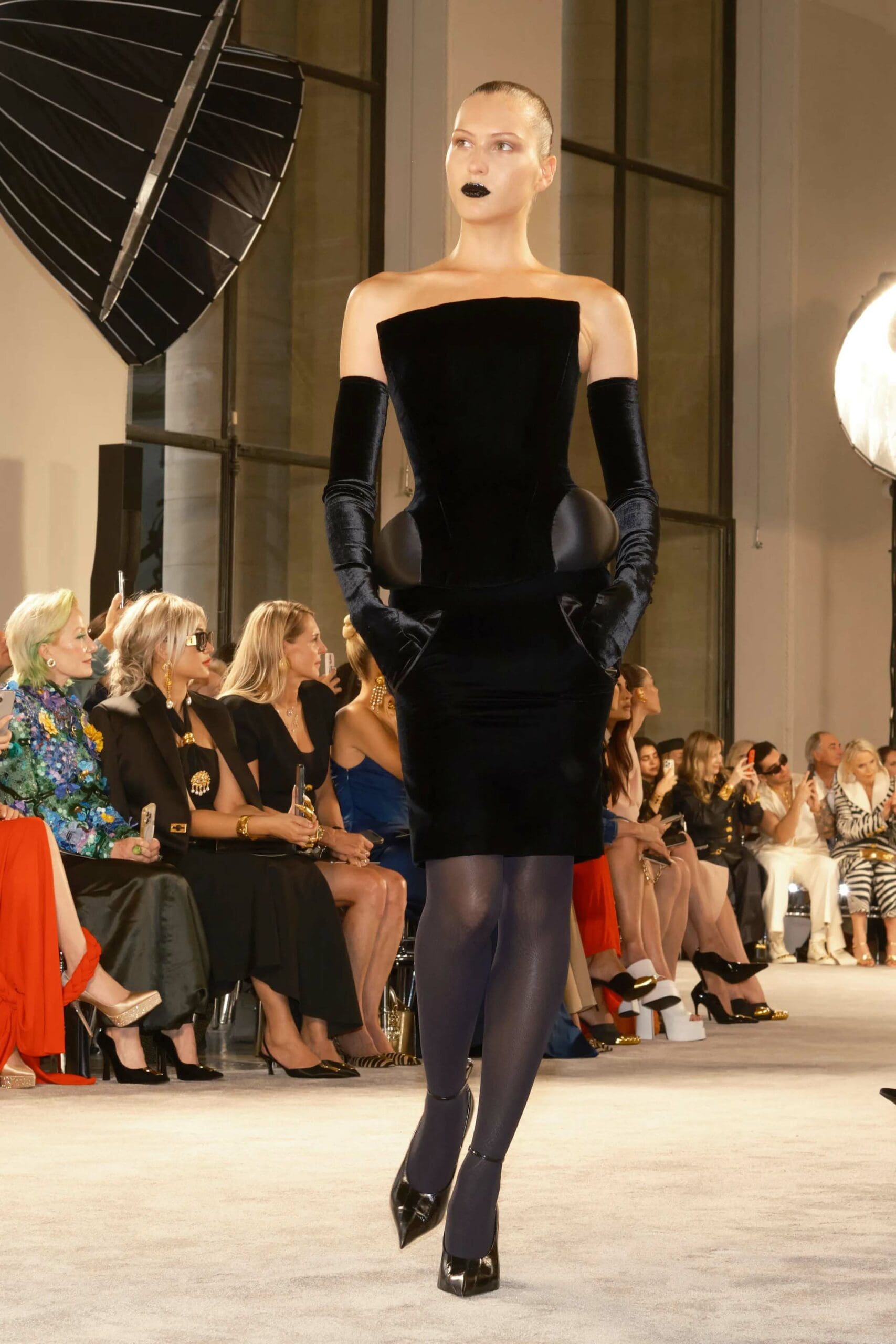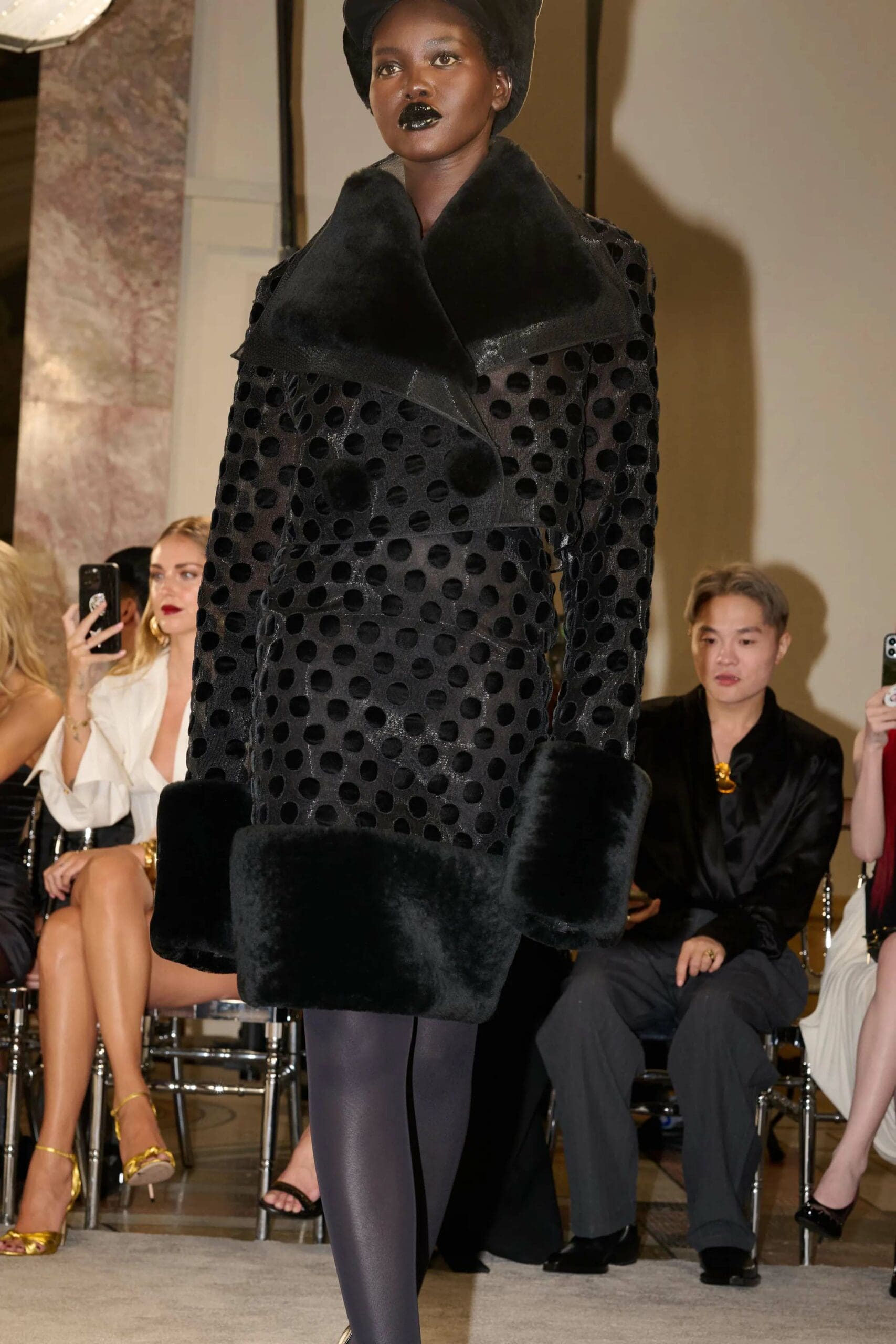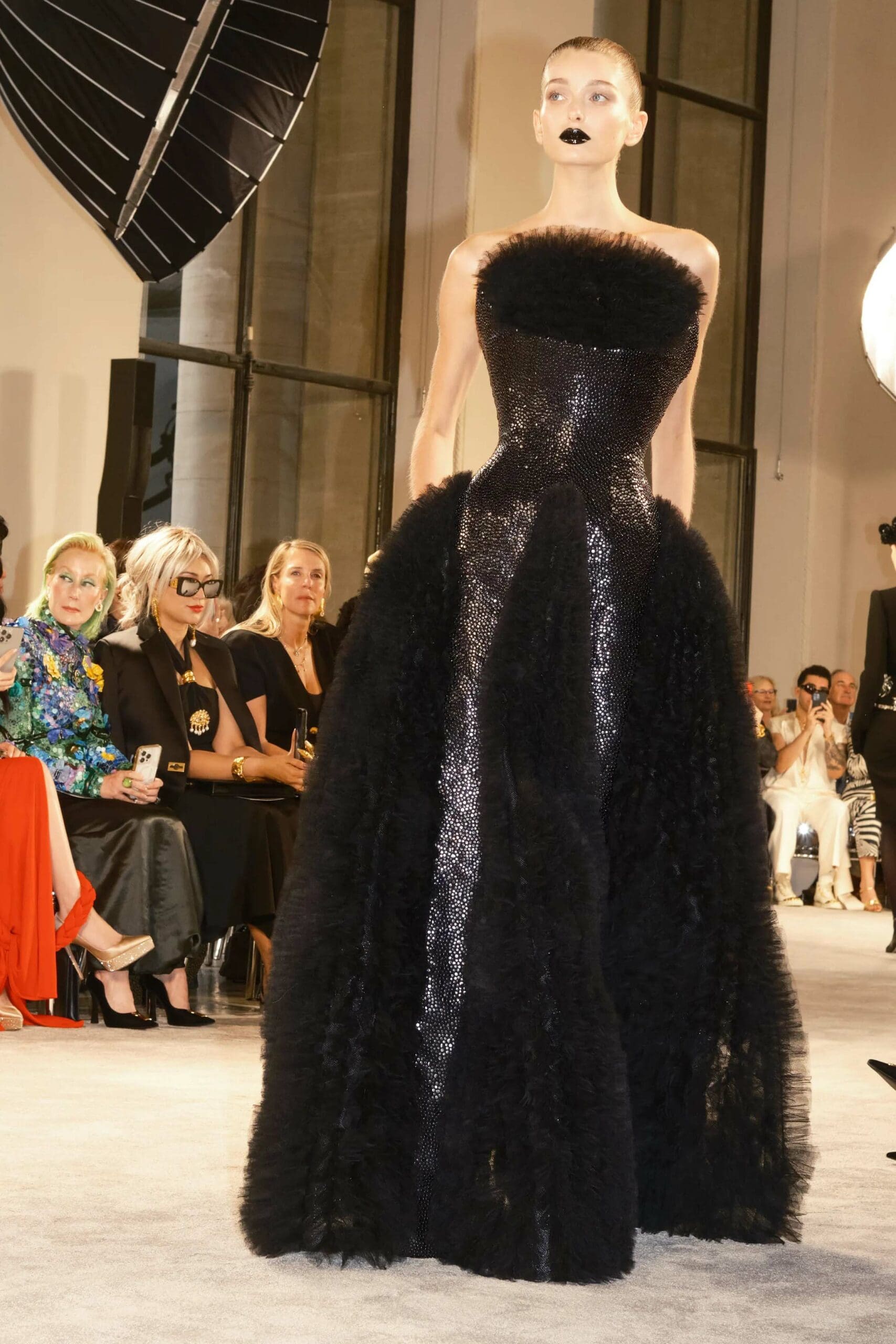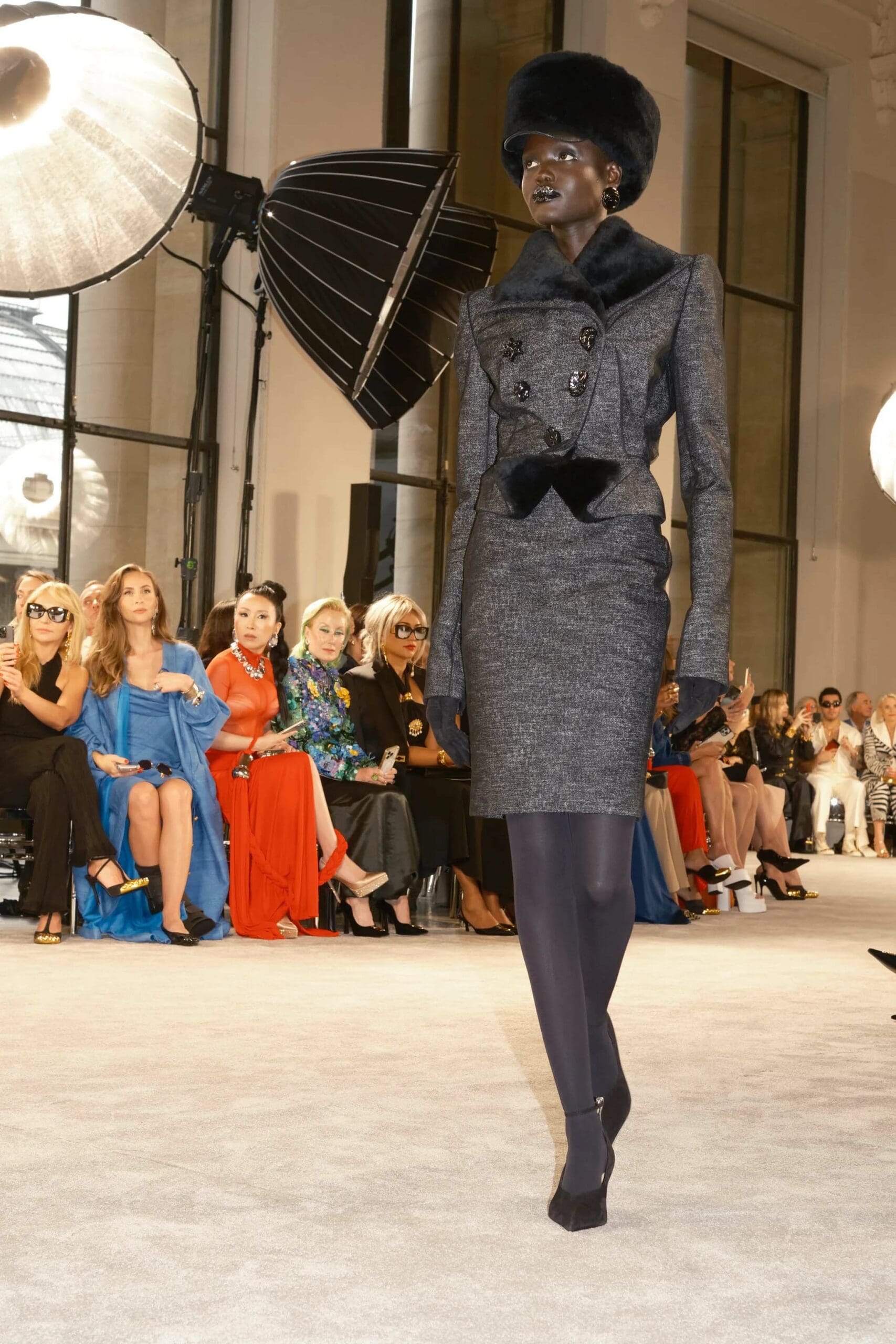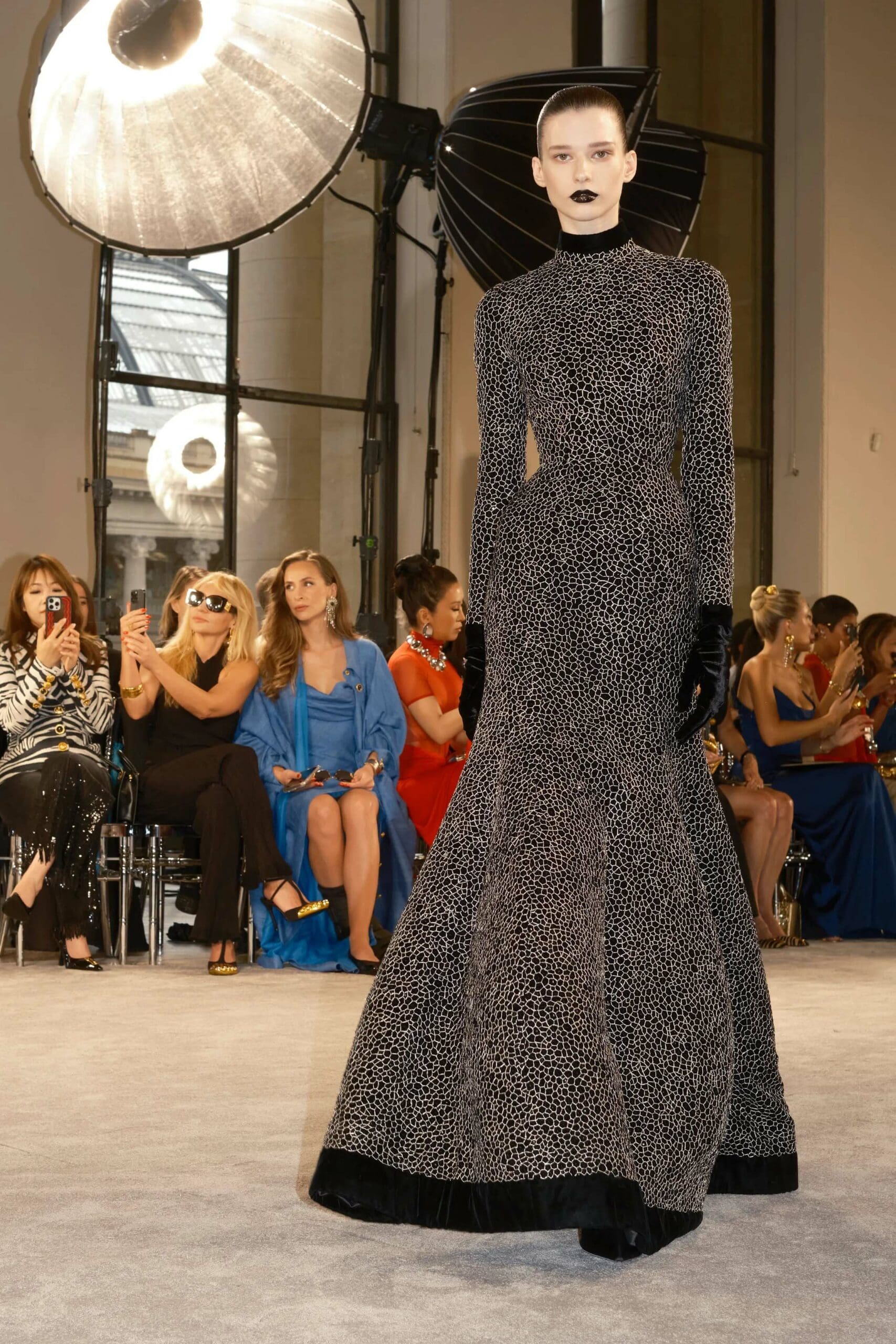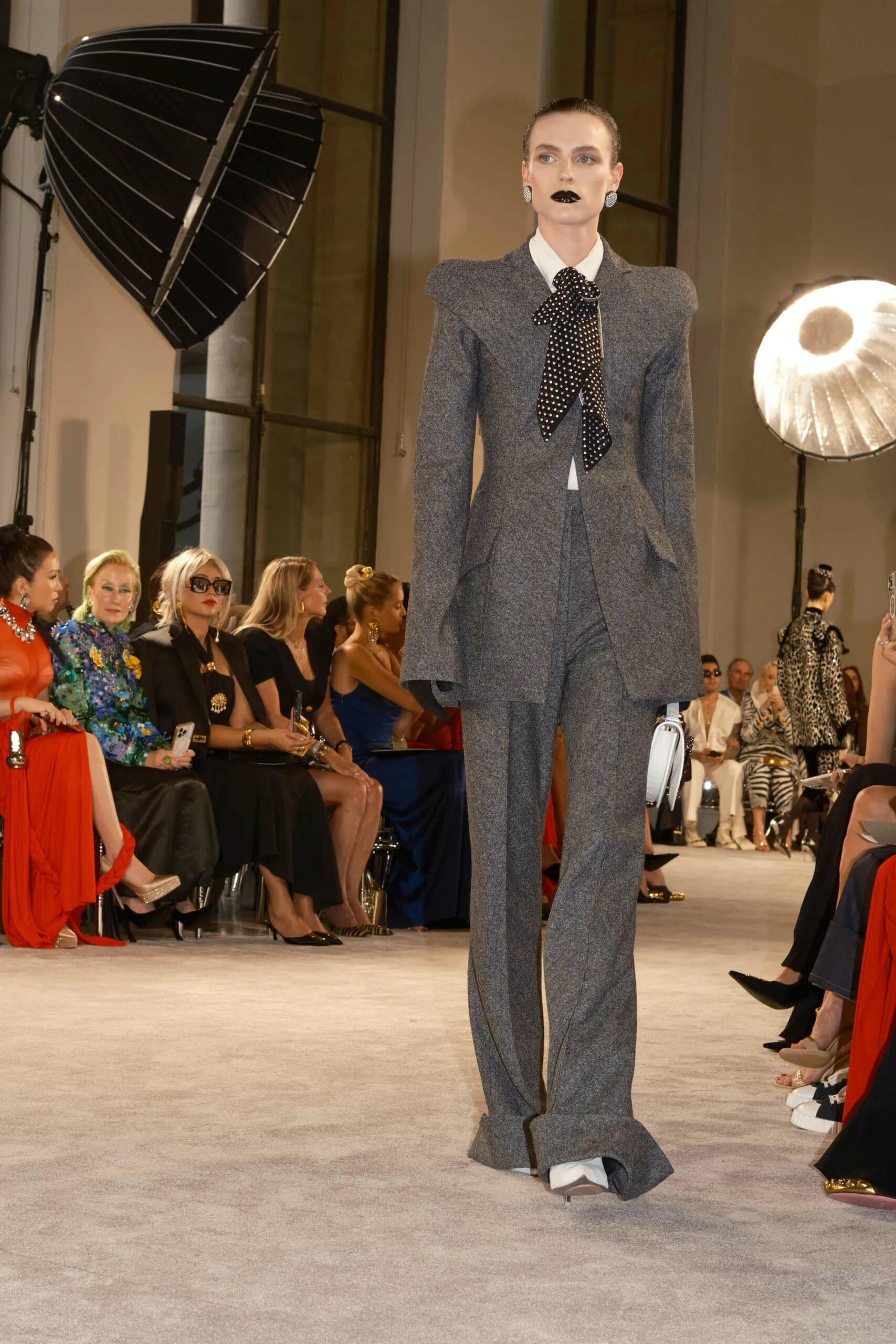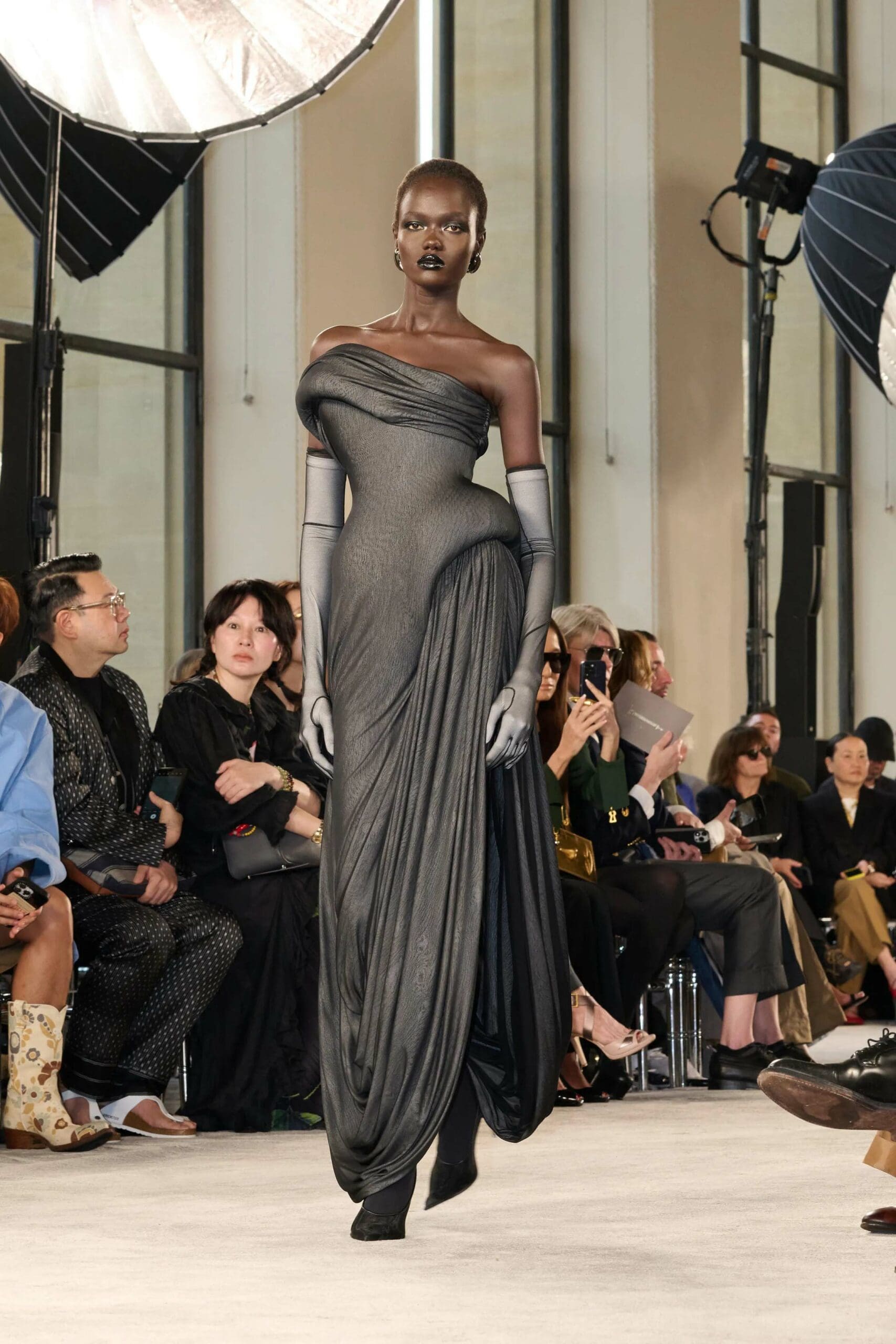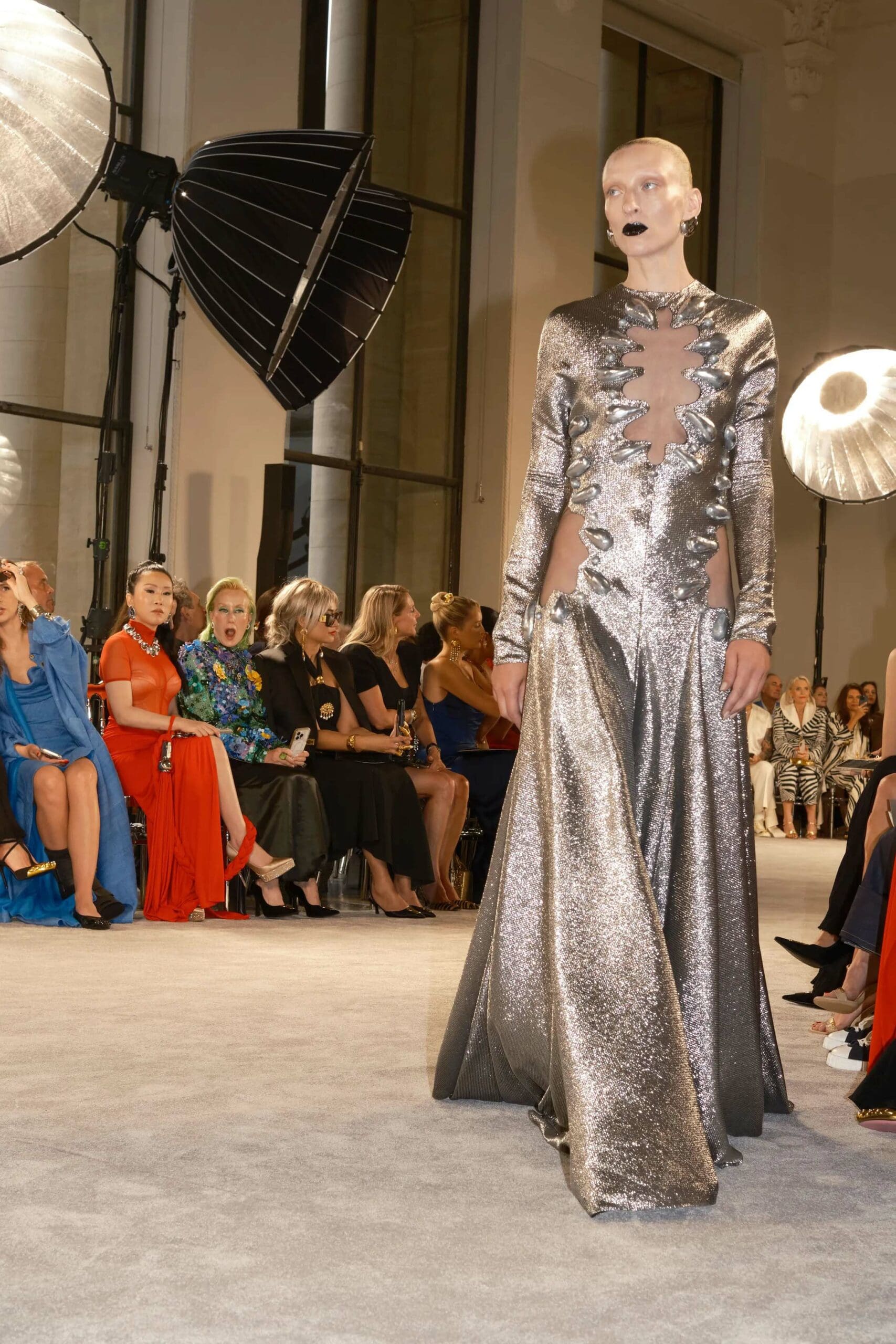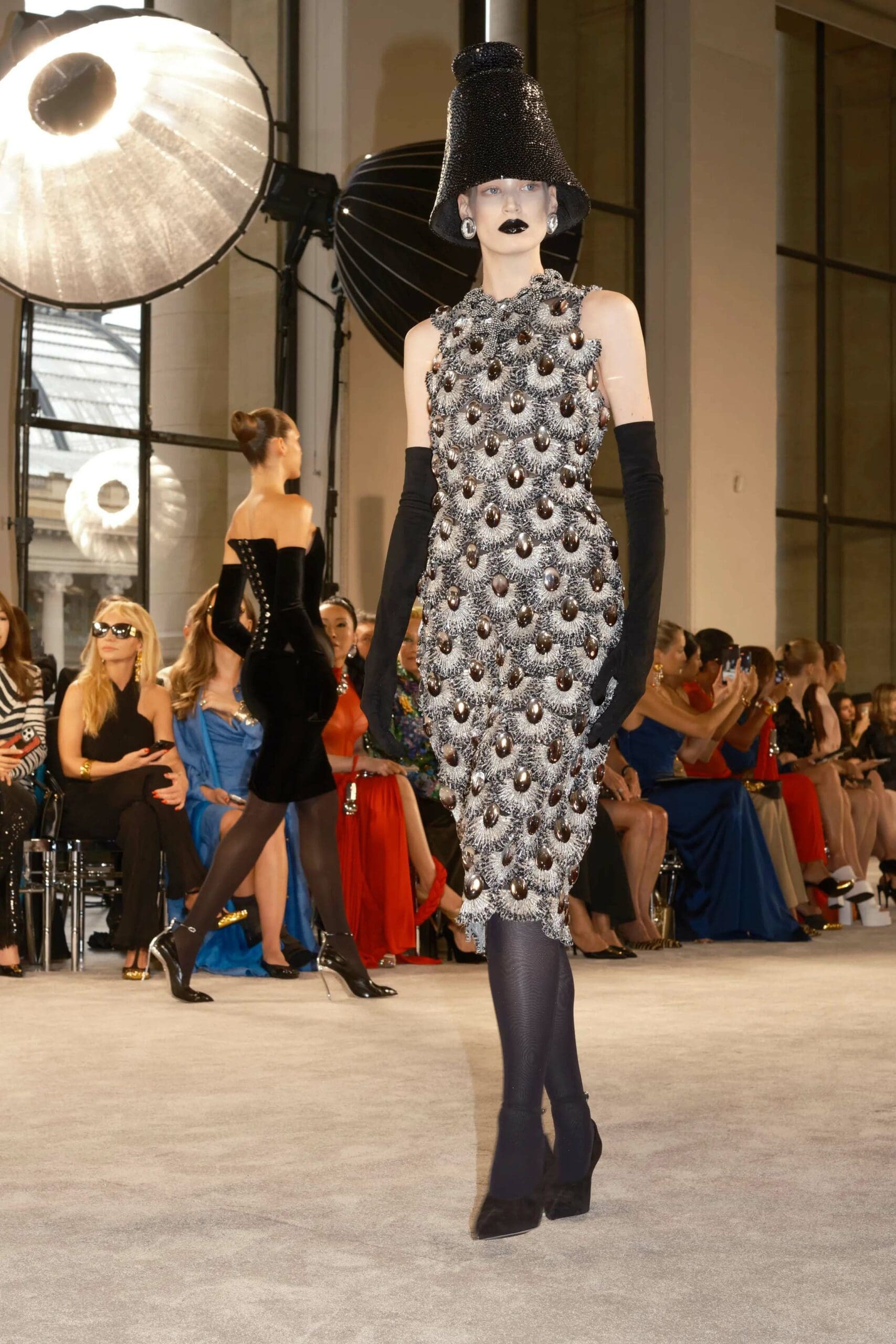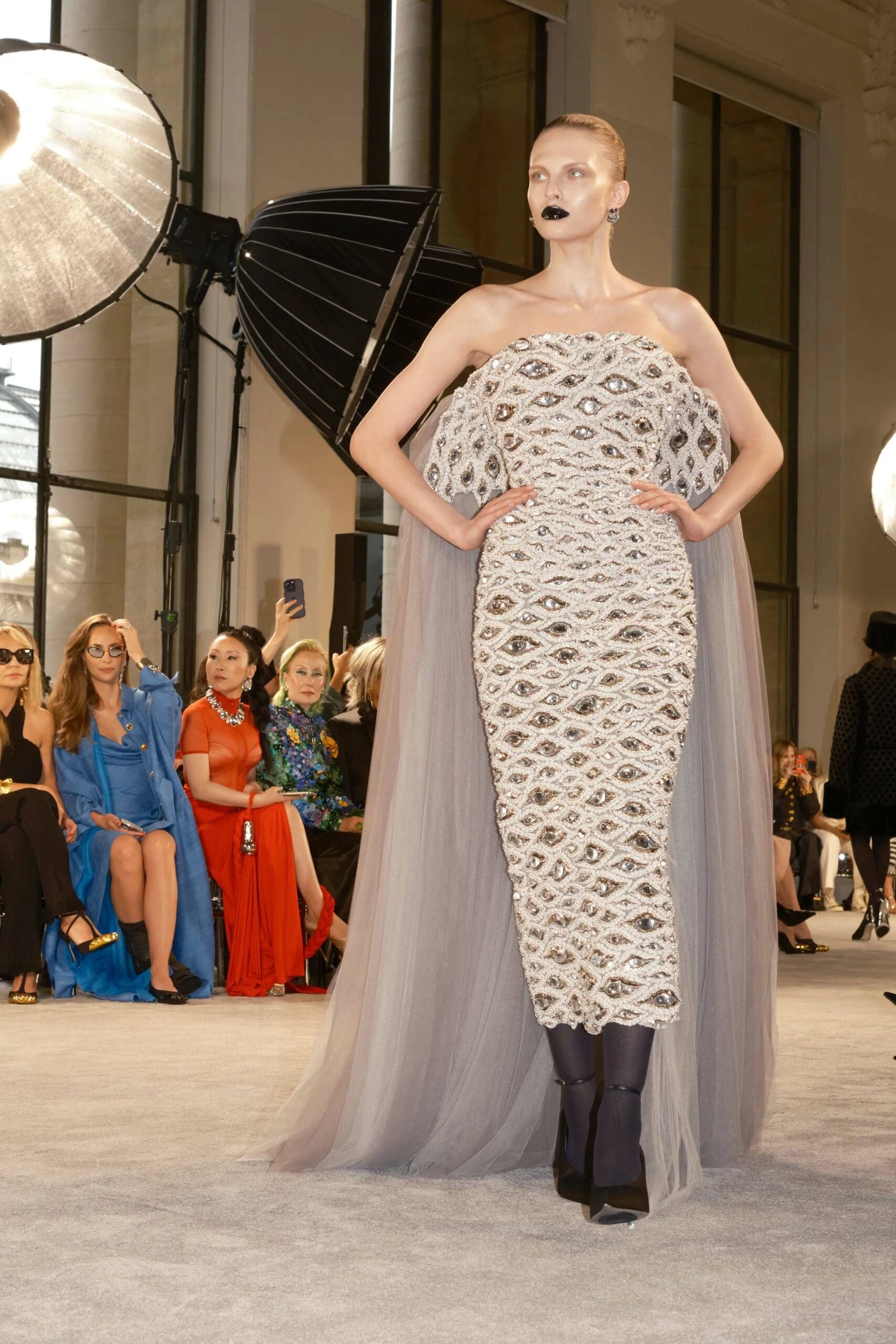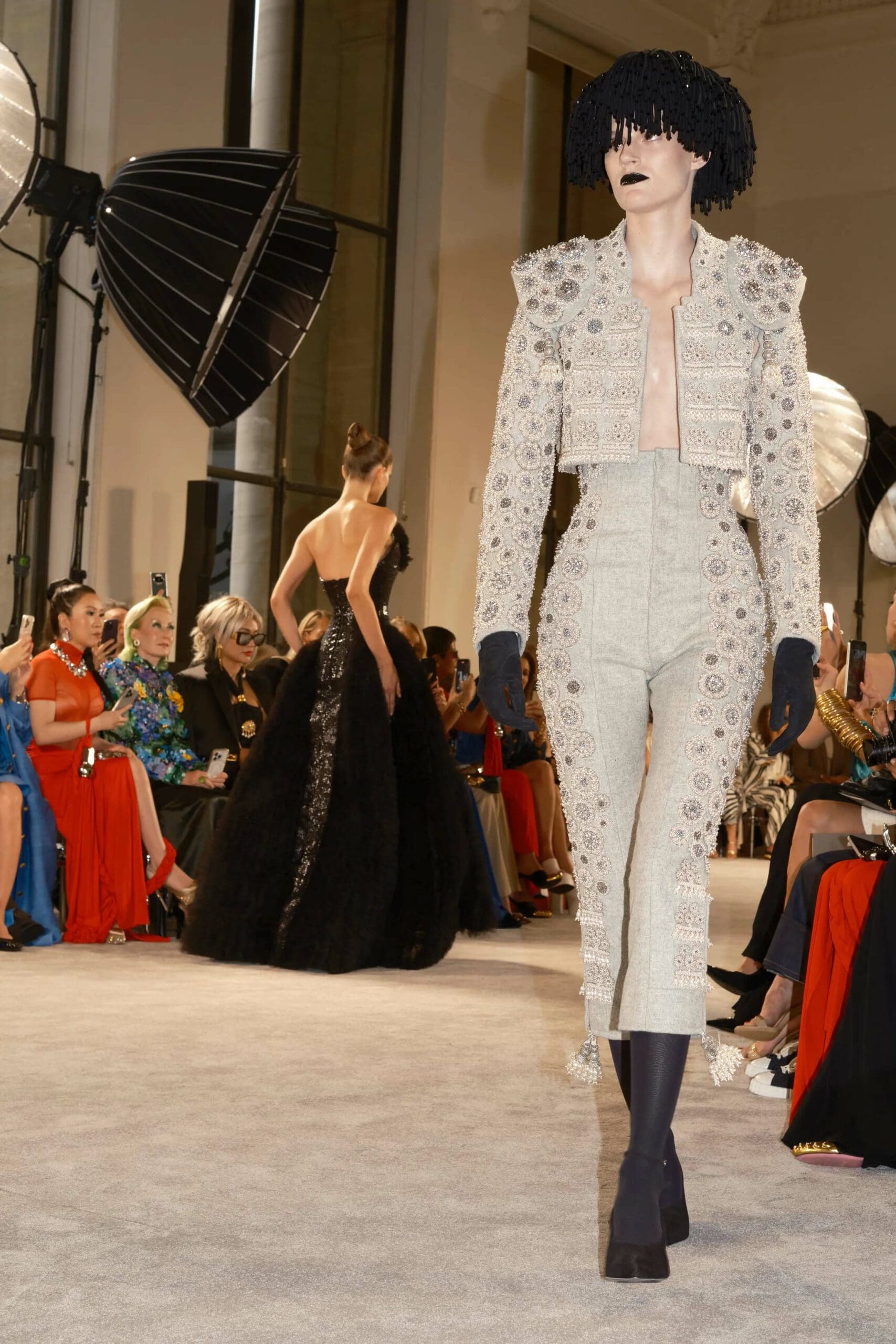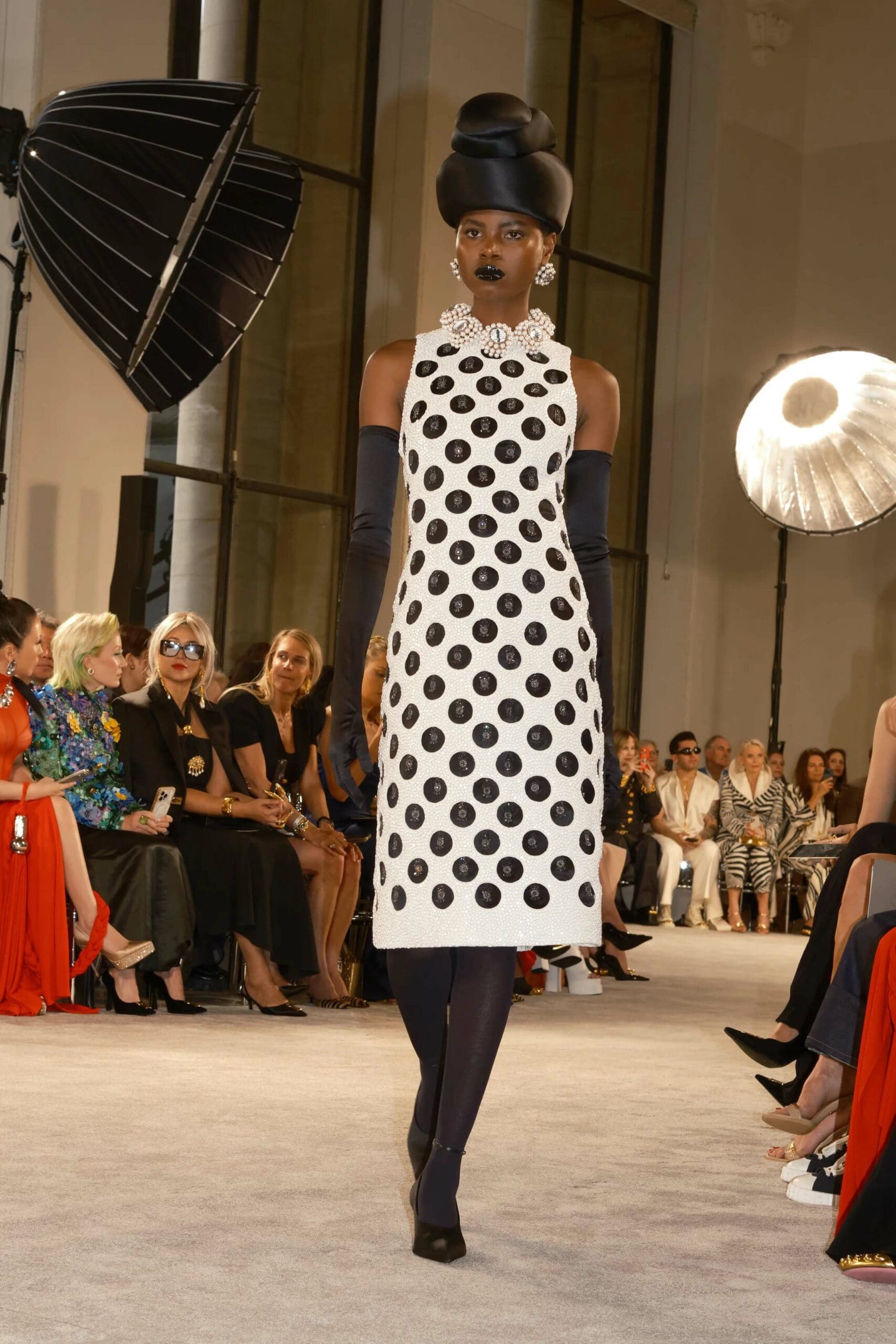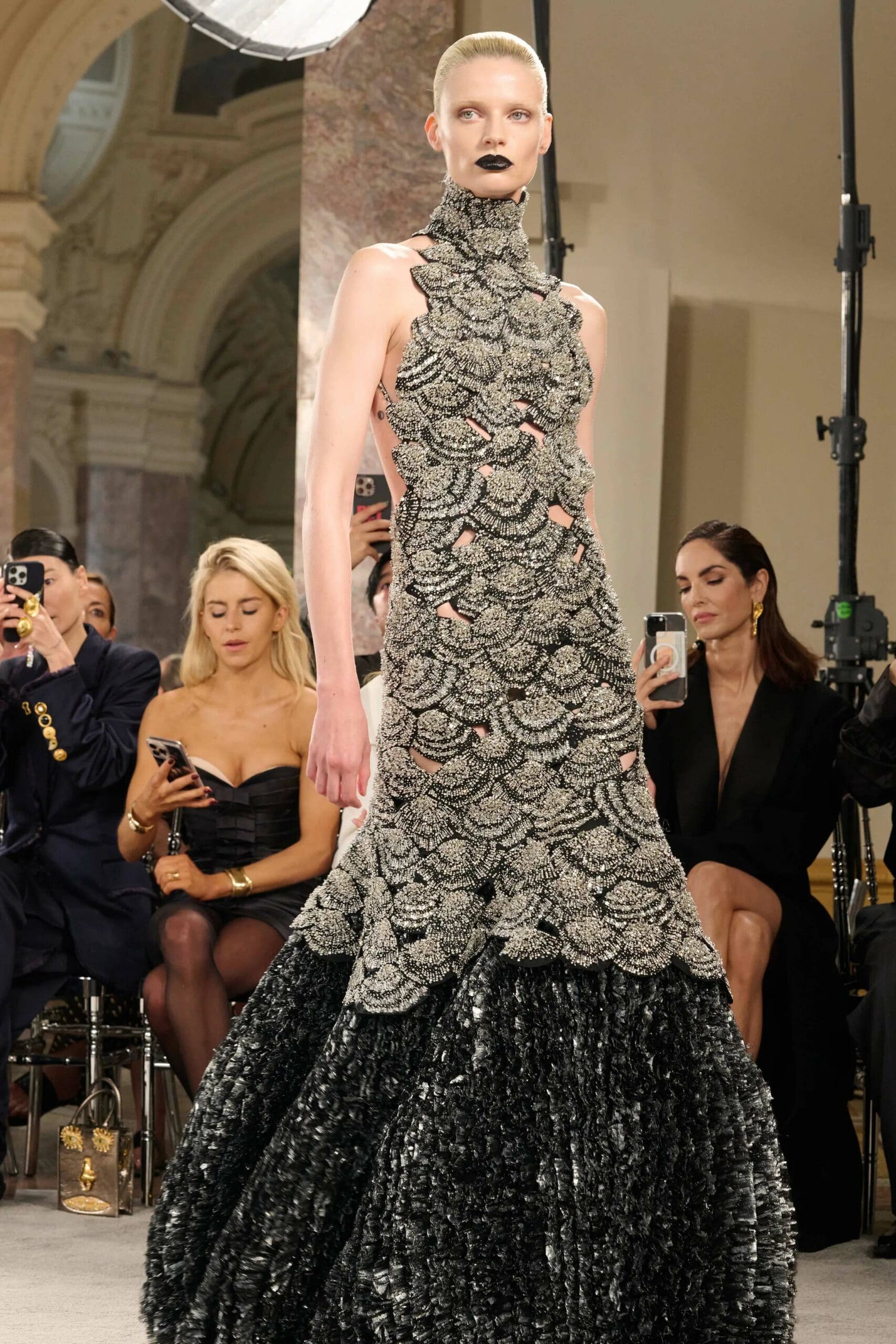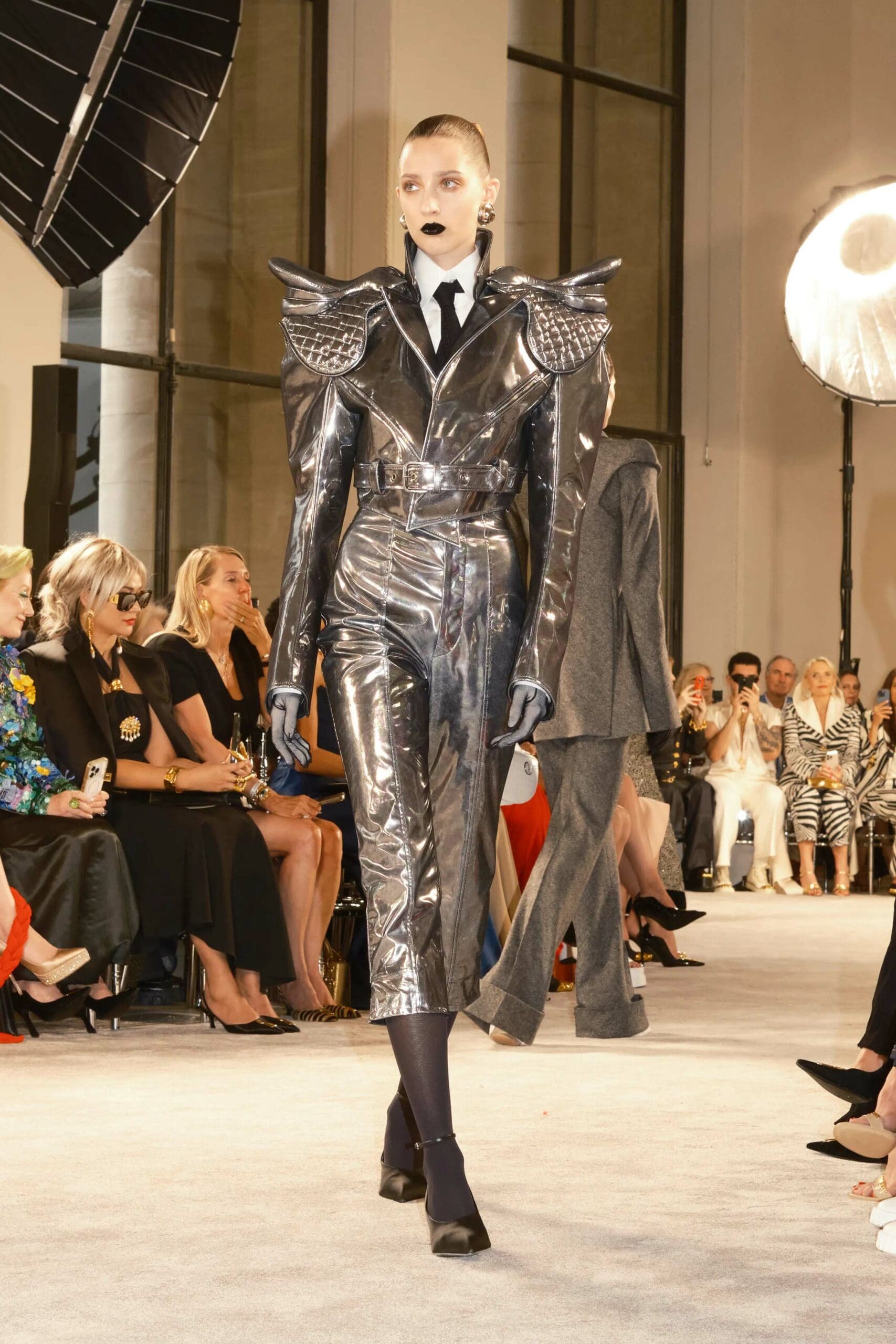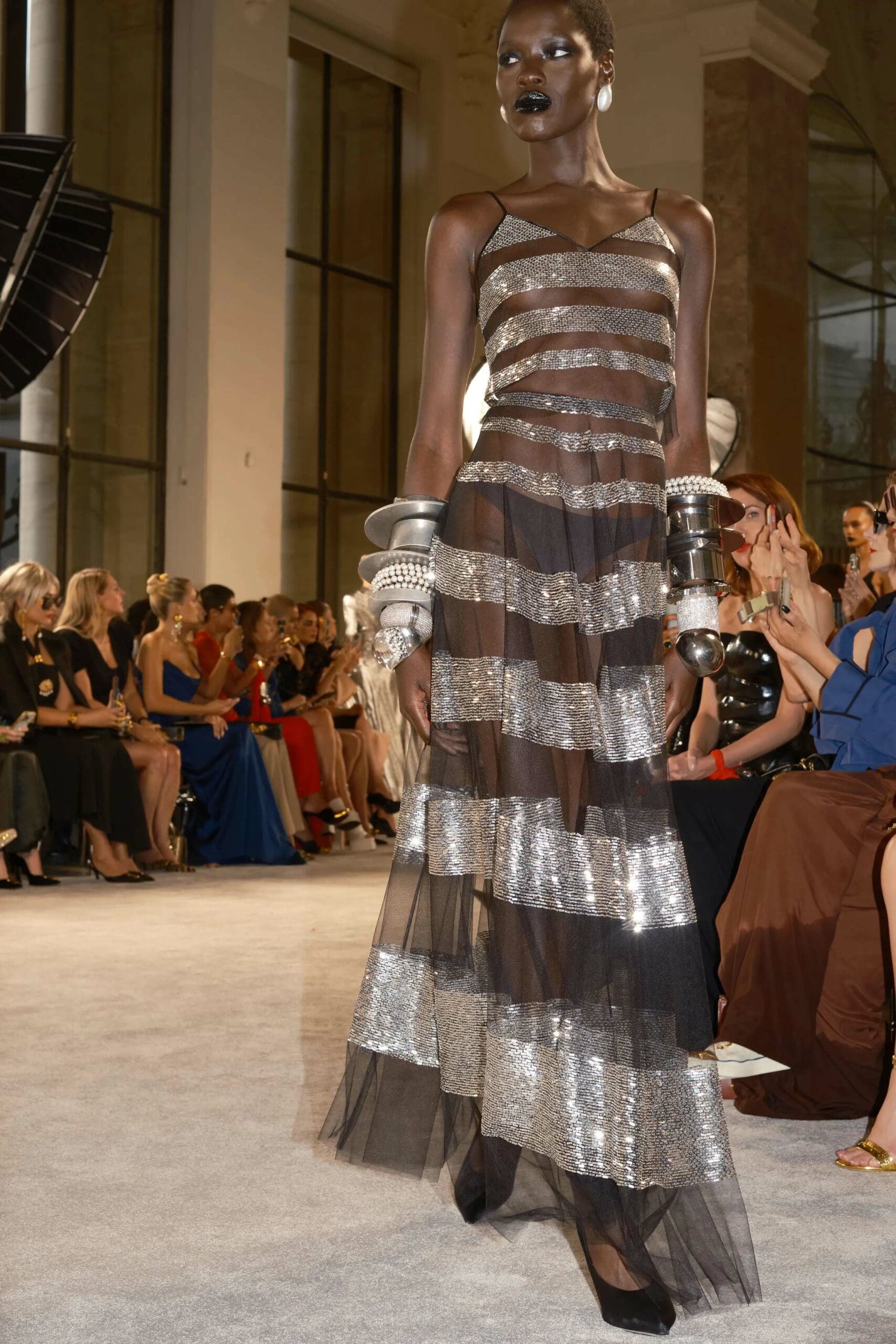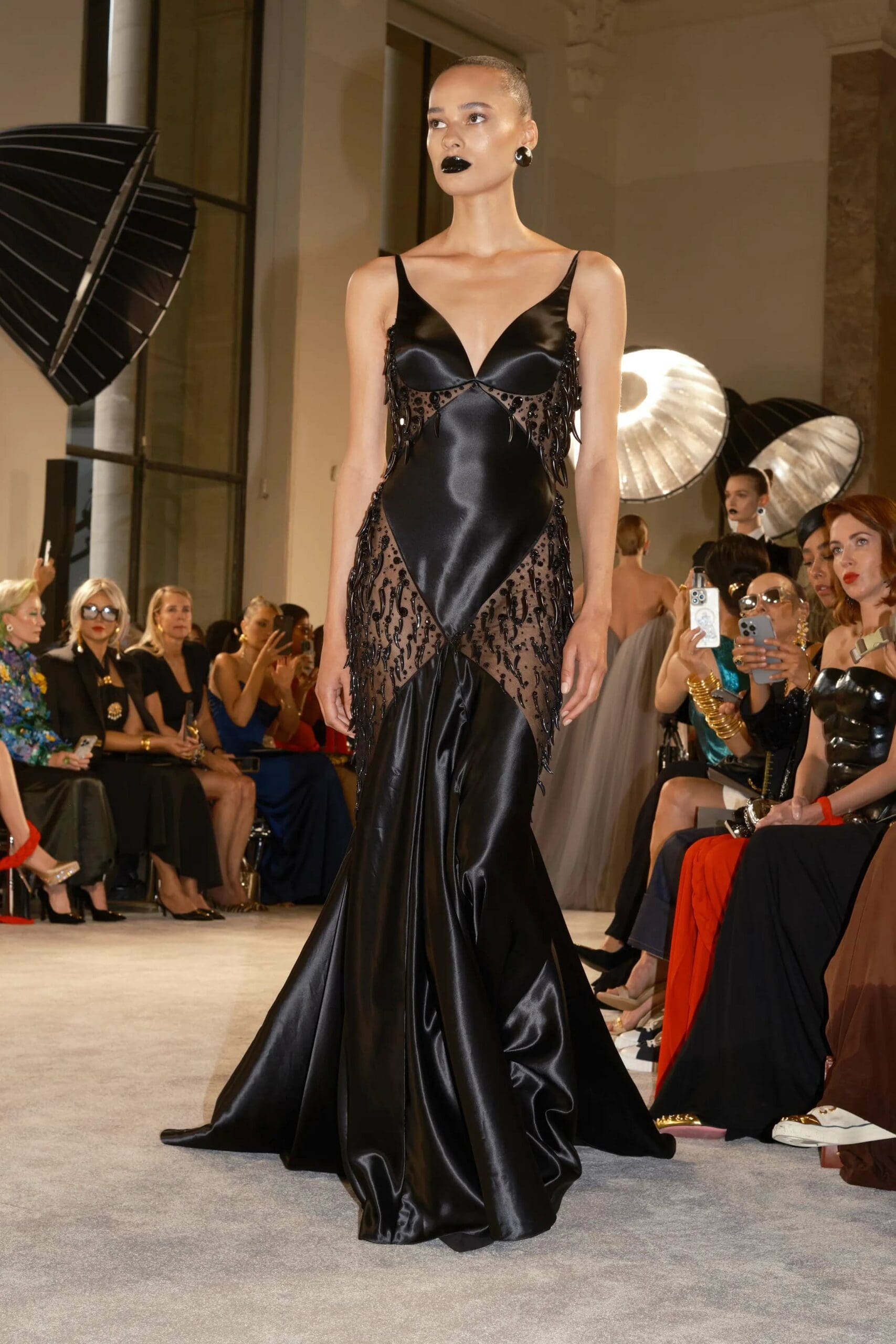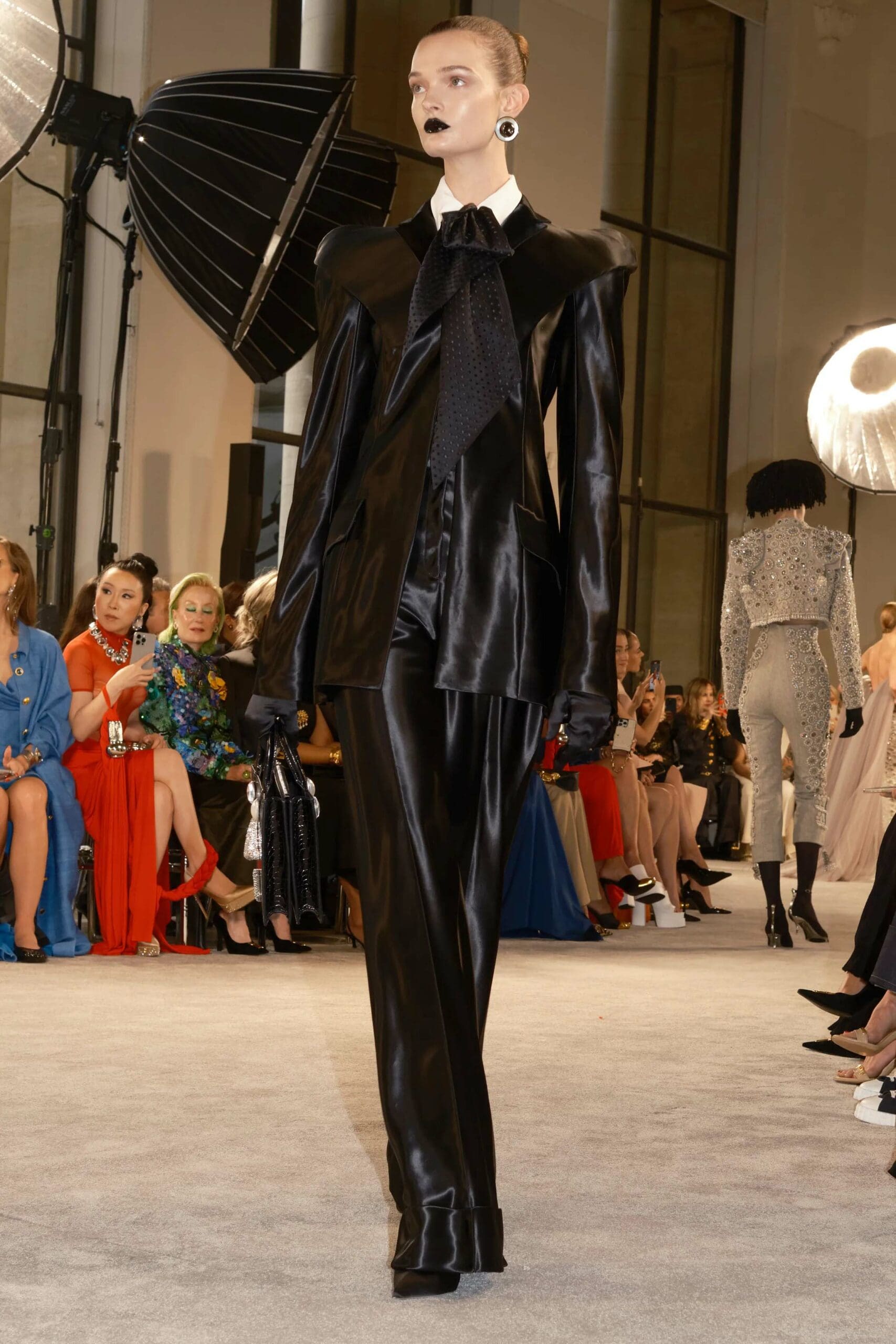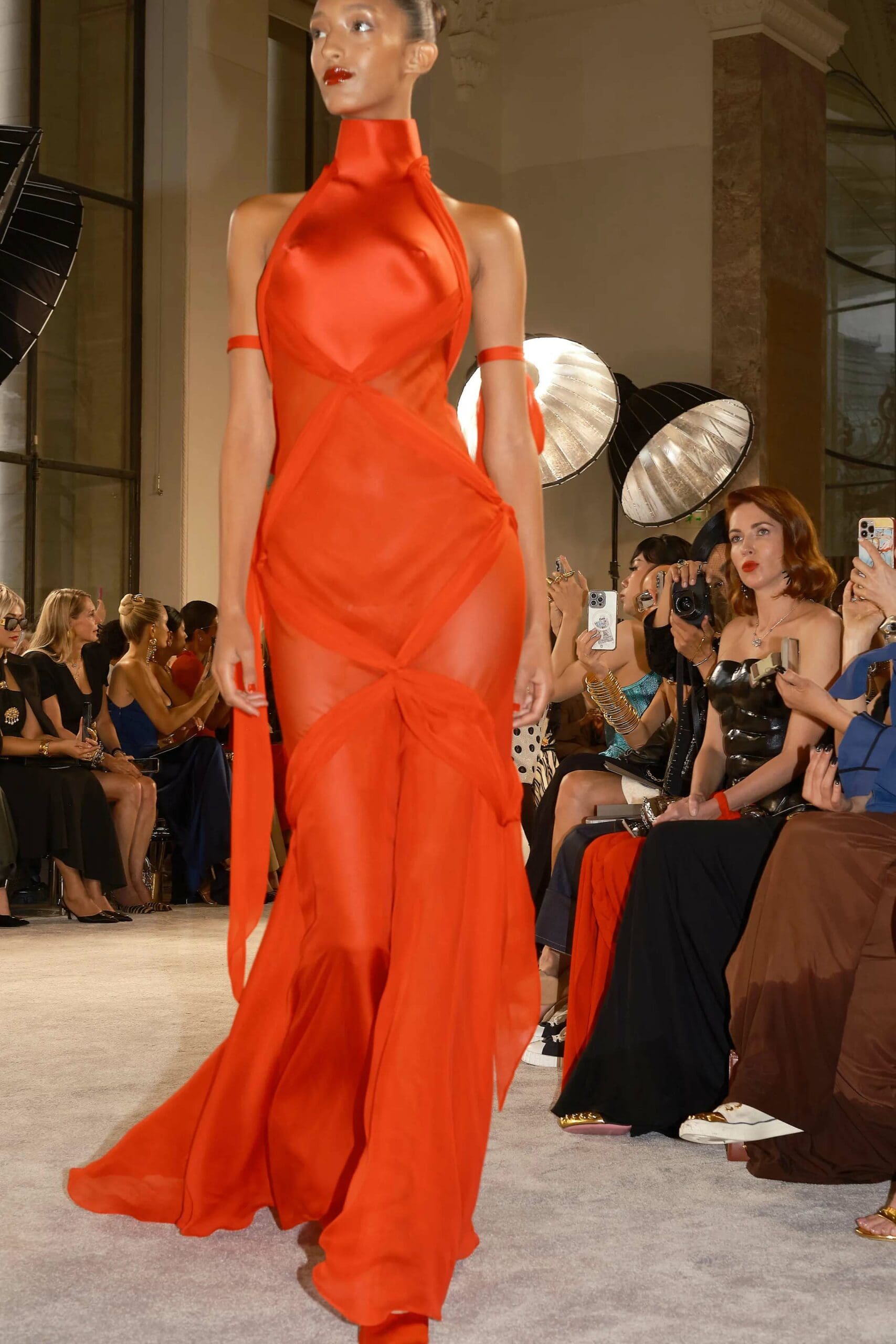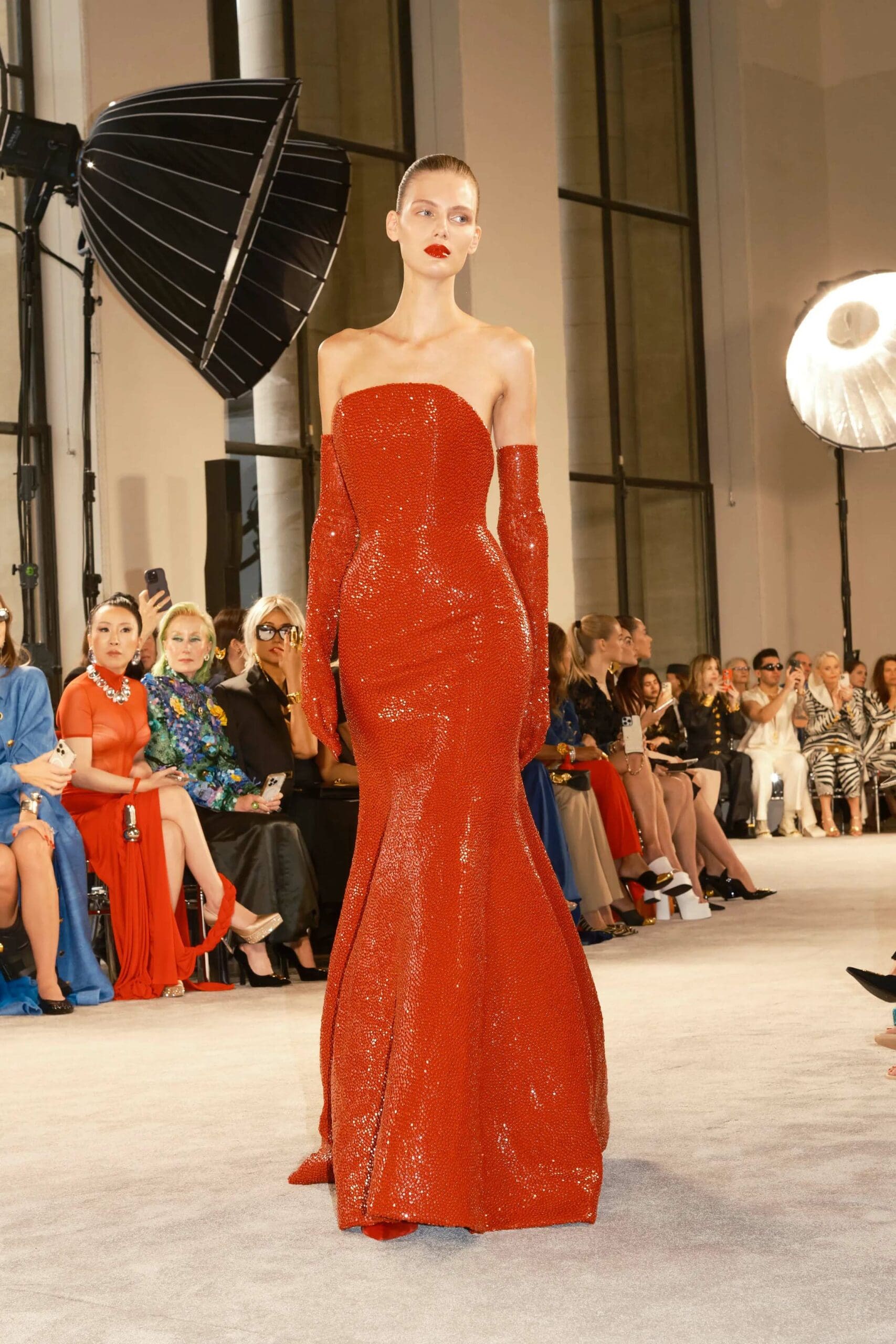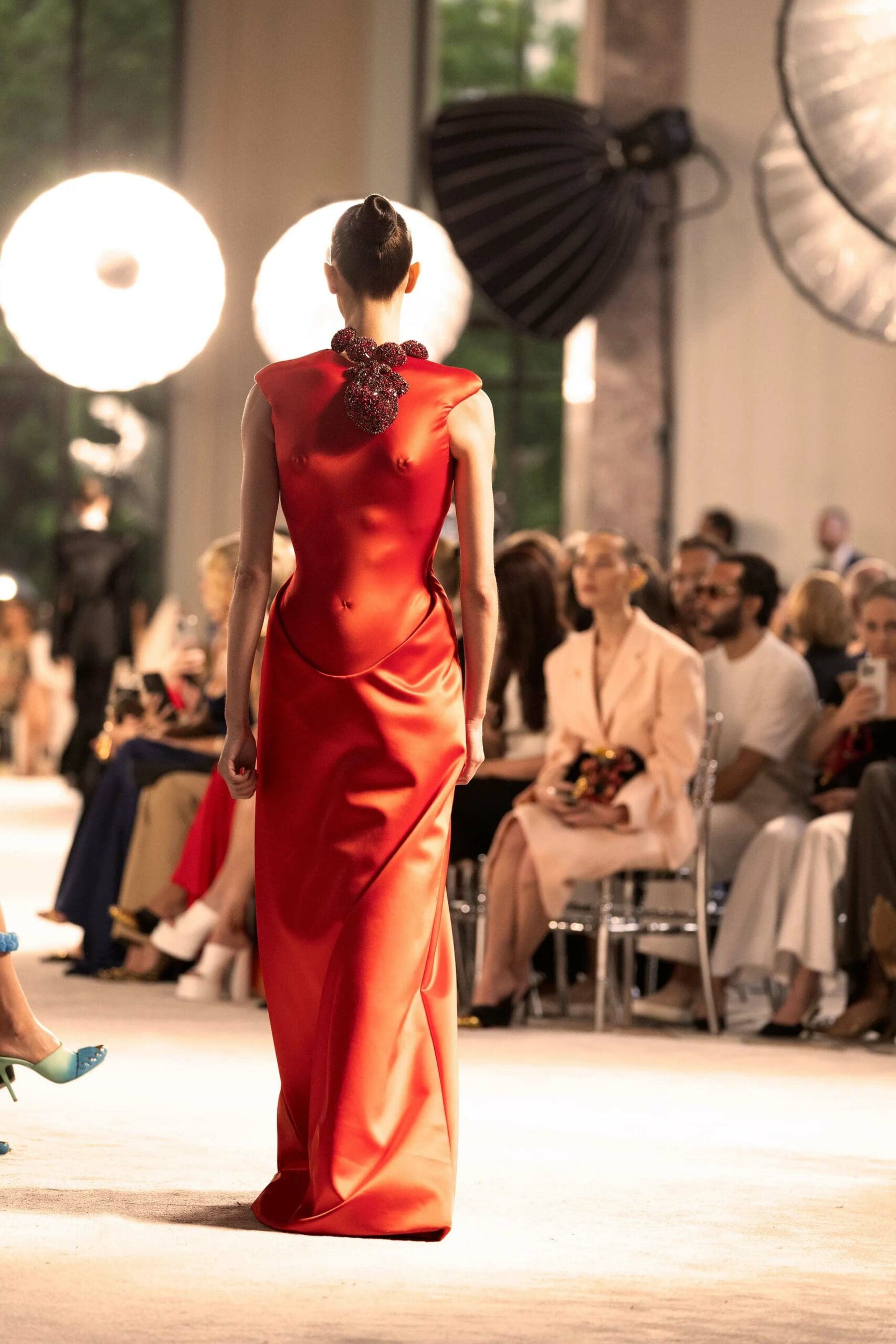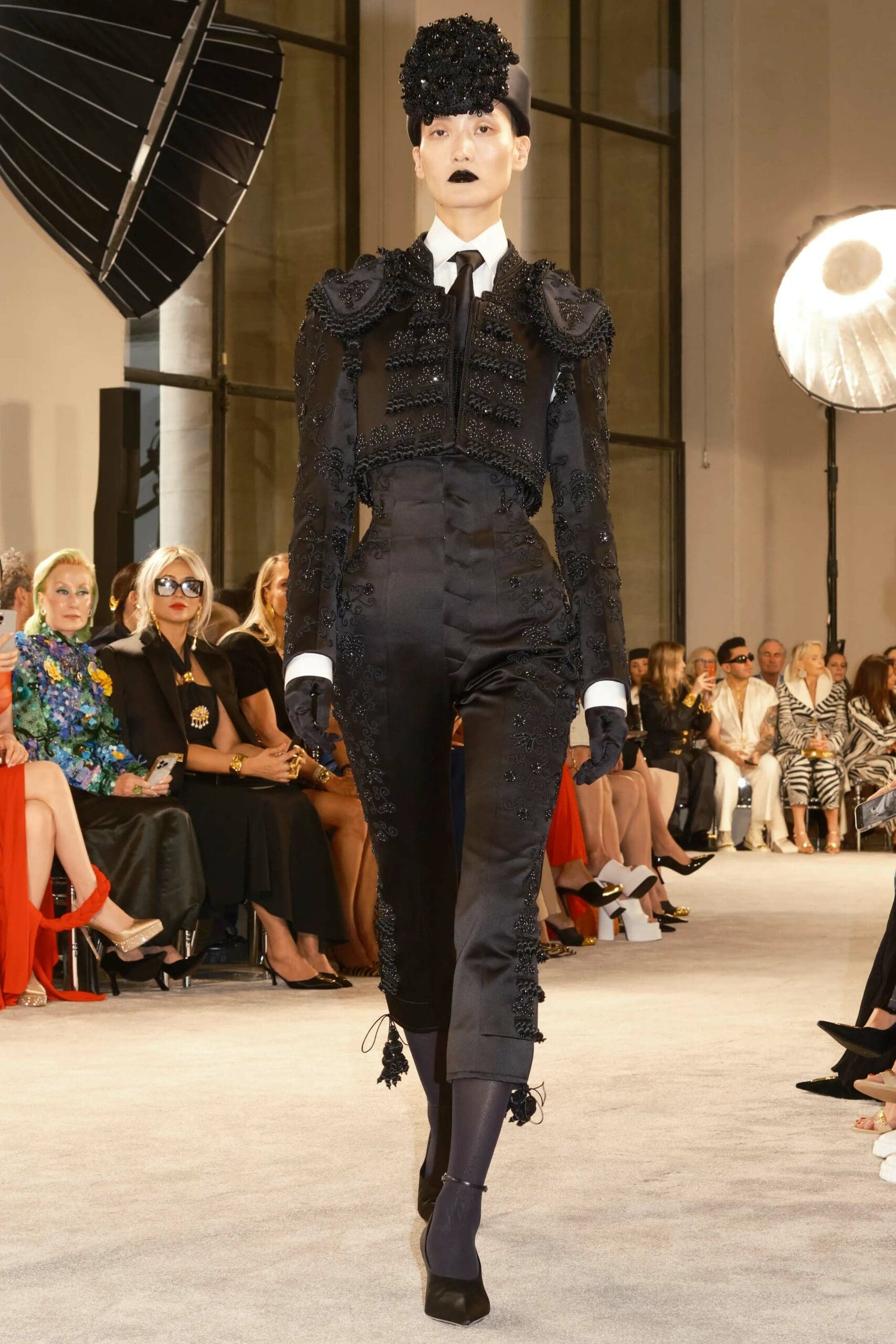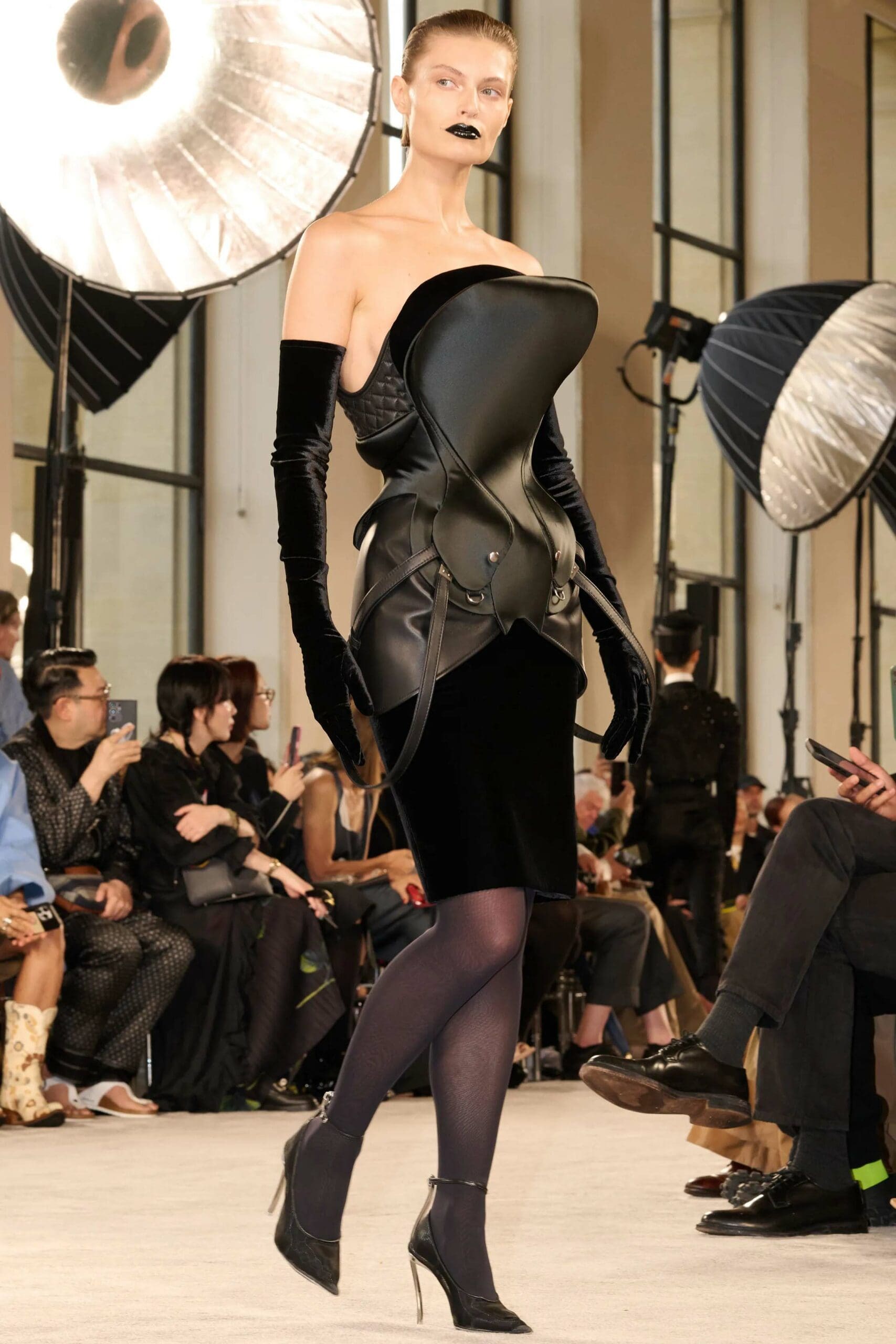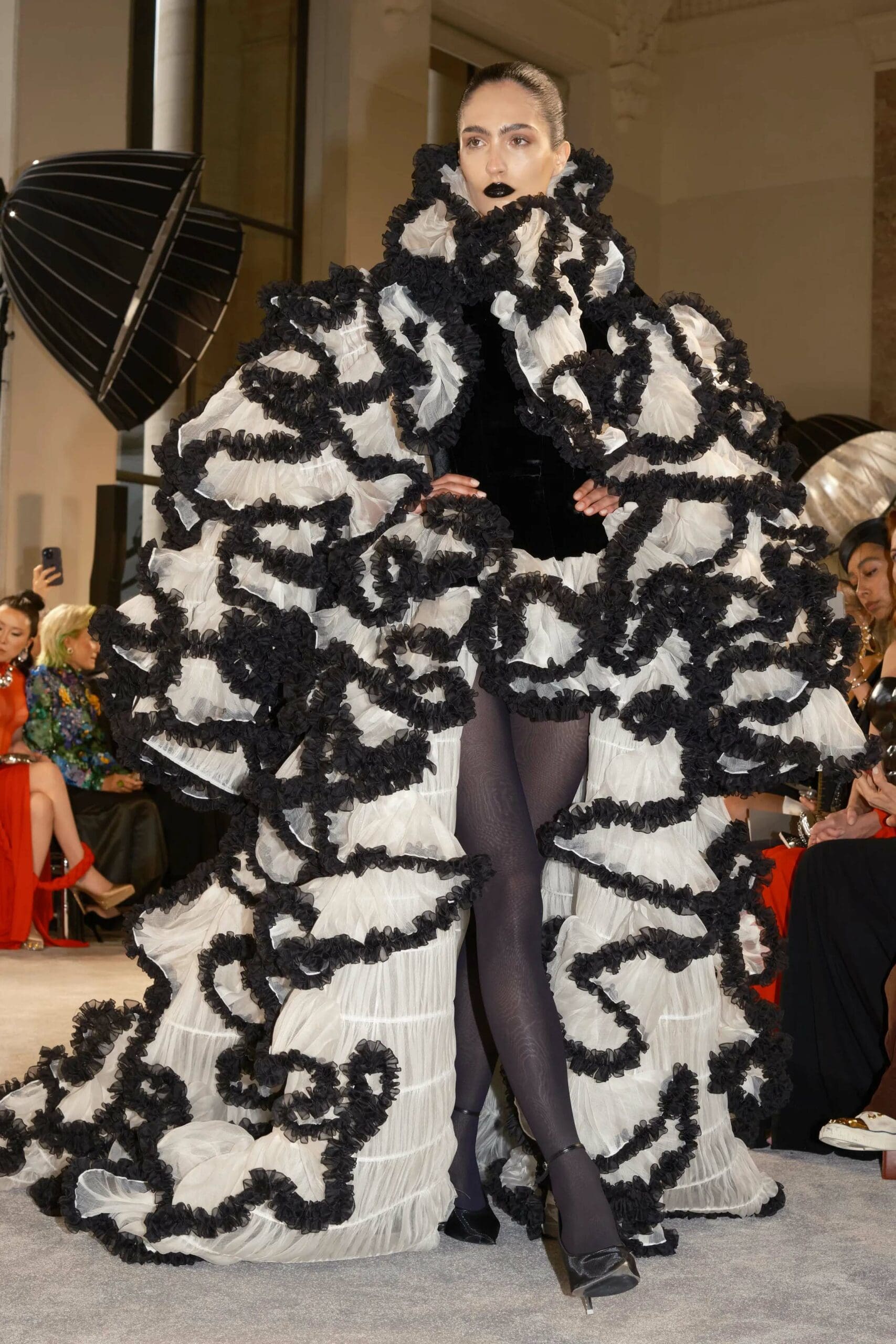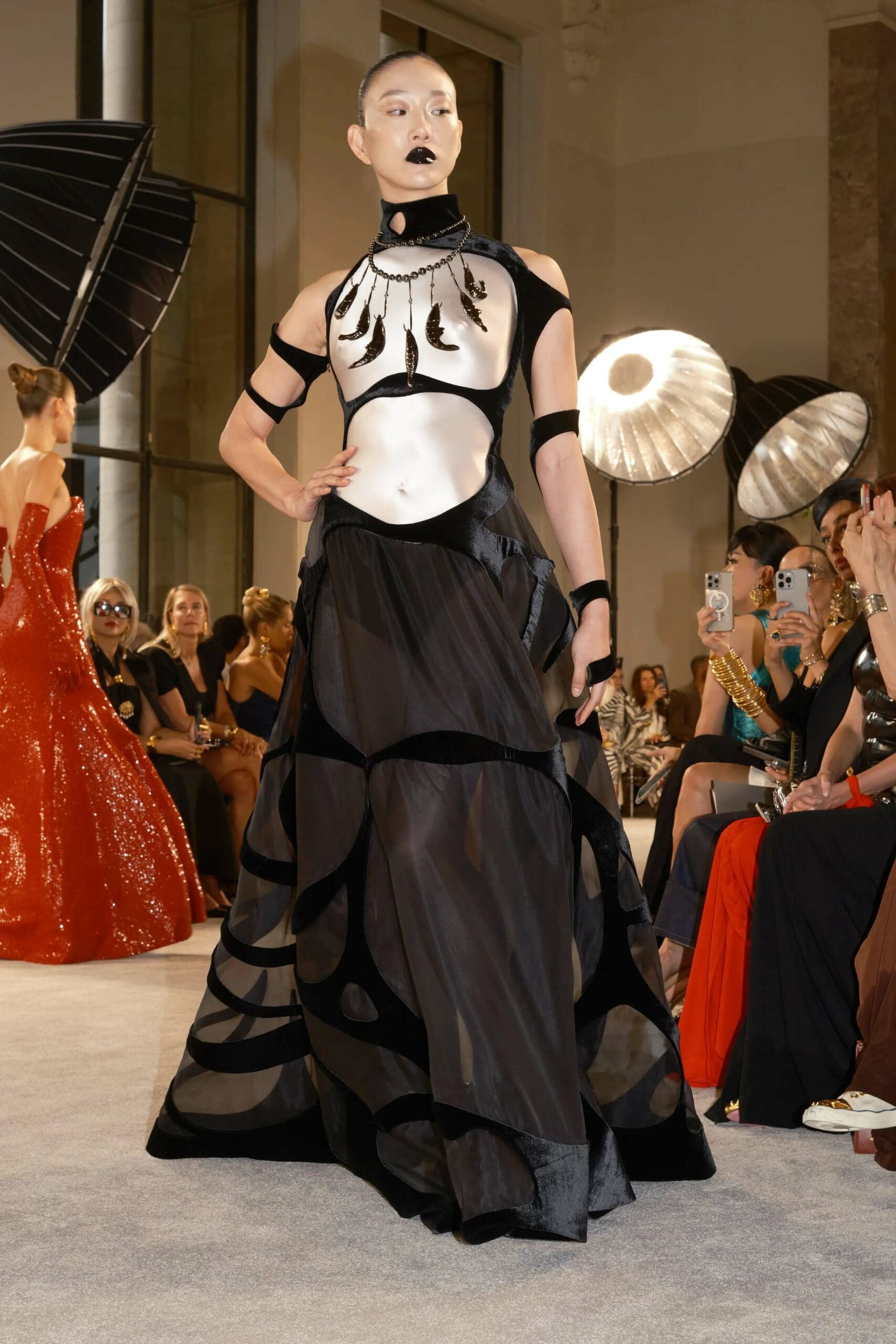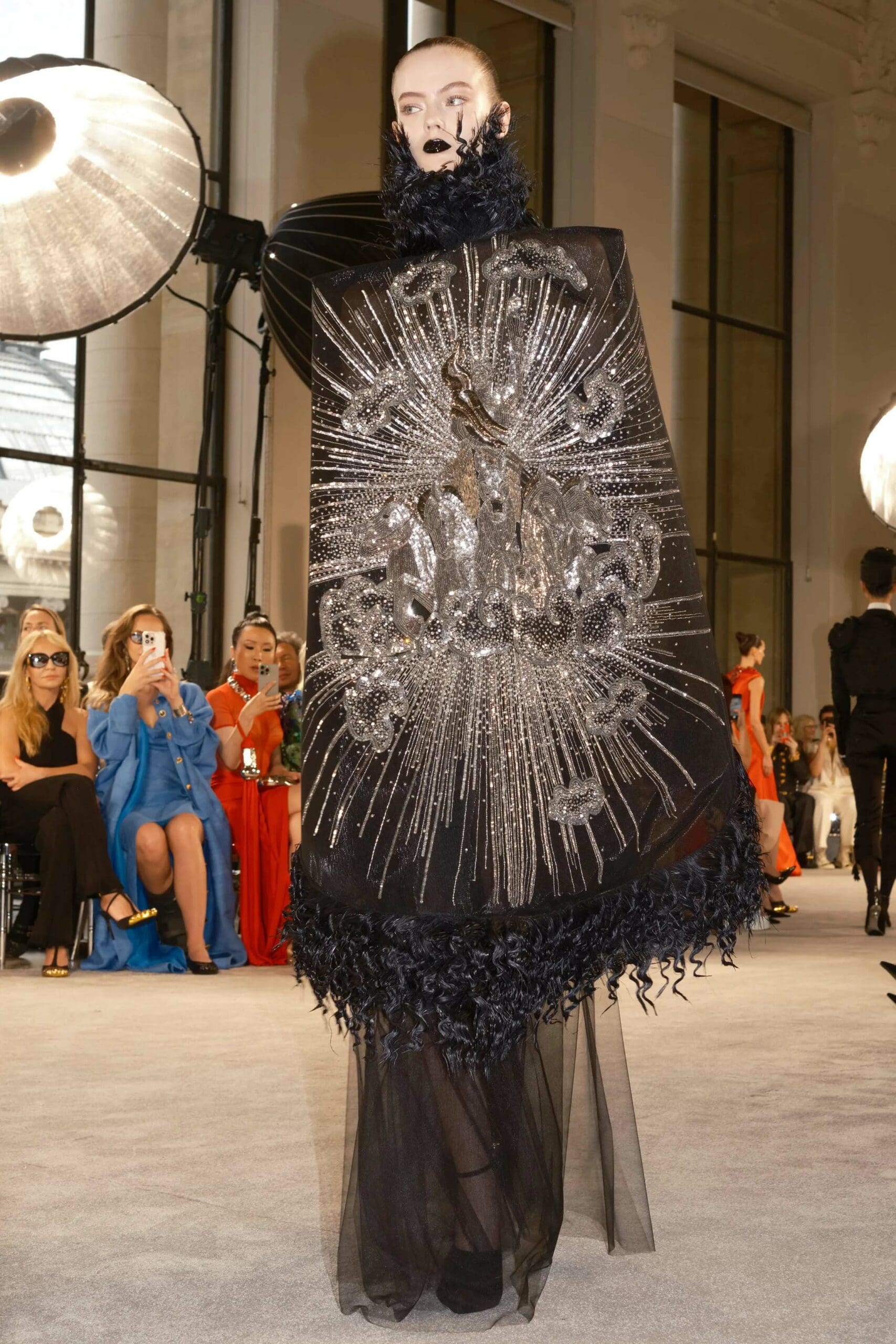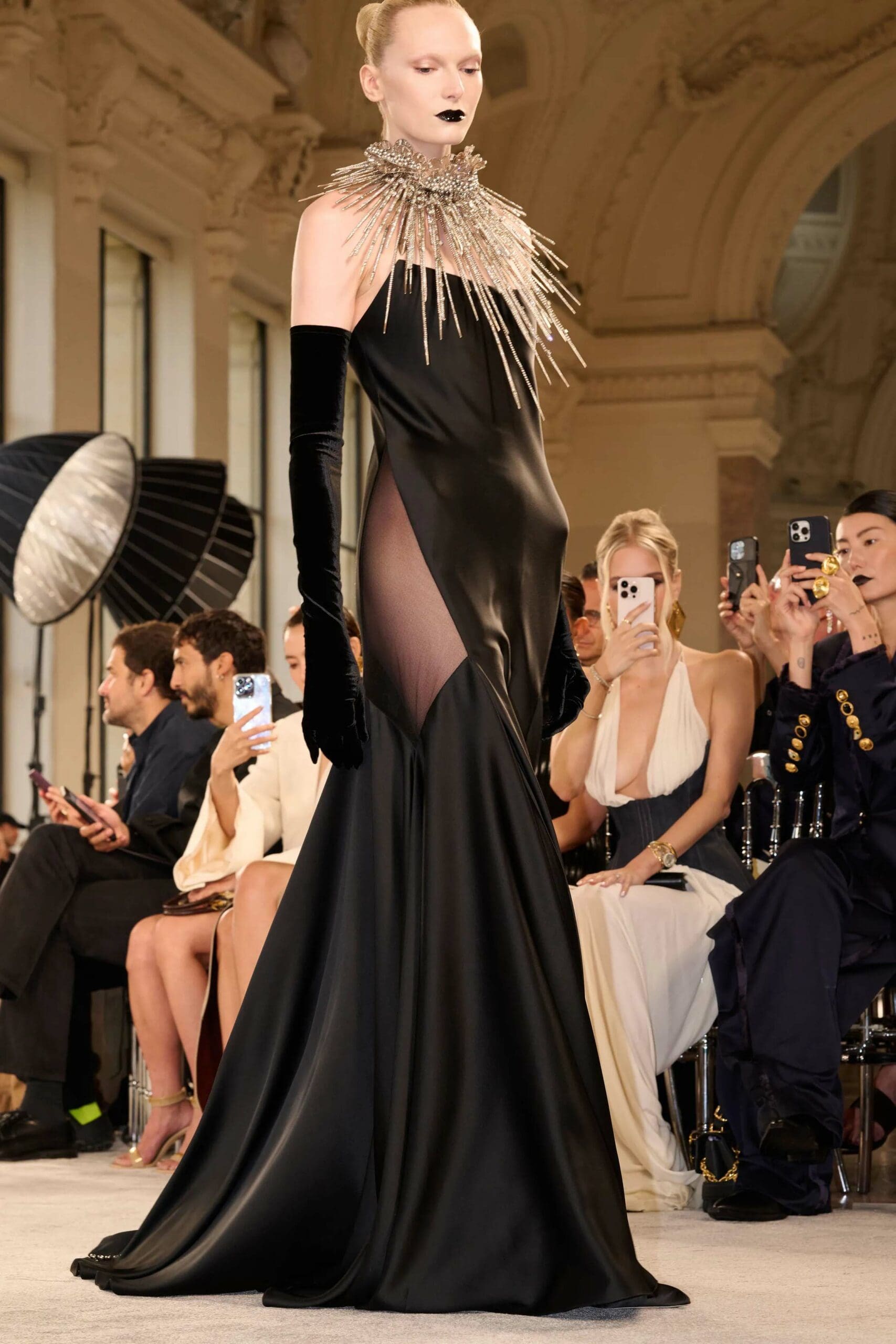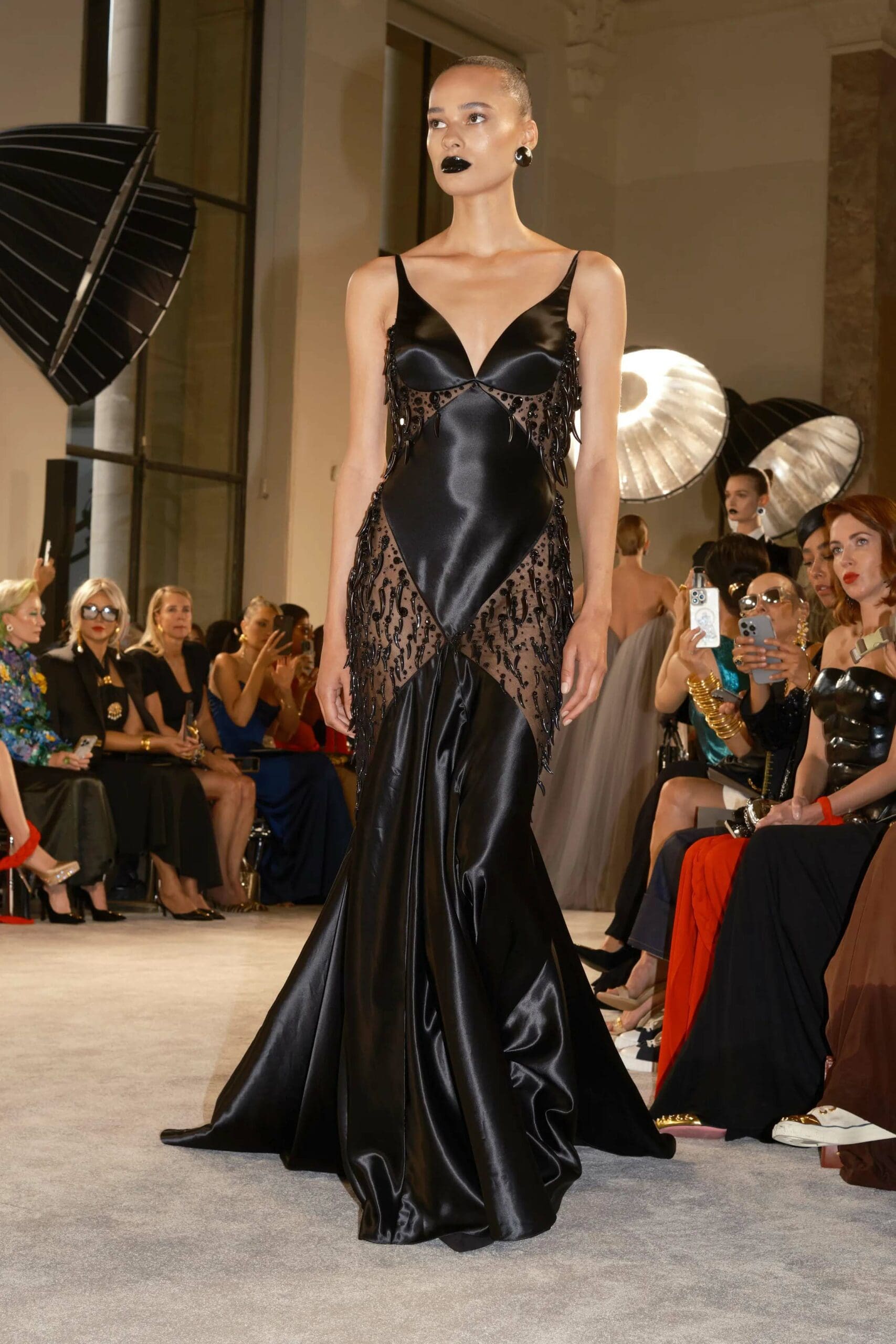Schiaparelli Fall-Winter 2025-2026 Haute Couture “Crow B, or Backward Drift”. Review by Eleonora de Gray, Editor-in-Chief of RUNWAY MAGAZINE. Photo / Video Courtesy: Schiaparelli.
Haute couture does not borrow. It remembers — deliberately, precisely, or not at all. References are a delicate matter. To cite the past is a statement; to repeat it is resignation. At today’s presentation of Schiaparelli’s Fall-Winter 2025-2026 collection, Daniel Roseberry offered neither a retrospective nor a vision — but something caught in-between: a Backward Drift masquerading as futurism, and a crow that may or may not have understood the irony of its role.
The house titled the show “Back to the Future.” But what transpired on the runway was less an act of time travel than an inversion of logic. A catalogue of echoes — garments, embroideries, shapes — lifted directly or barely reworked from Roseberry’s own earlier collections and occasionally others, presented as if memory alone could pass for innovation.
The Goodbye That Wasn’t Announced — But Staged
Did Daniel Roseberry just get fired?
One doesn’t typically begin a couture show with a farewell speech — unless the show itself is a resignation letter. And yet, that’s precisely what opened Schiaparelli’s Fall-Winter 2025-2026 presentation. In an oddly personal prologue, Roseberry invoked the summer of 1940, when Elsa Schiaparelli fled a war-fractured Paris and boarded a ship for New York. “In June of 1940, Elsa Schiaparelli left Paris, a city she loved and had grown to call home, and boarded a ship for New York. It marked the end of a decade, but also the end of a revolutionary period in fashion,” he wrote, solemnly.
Are we meant to draw parallels? Should we prepare for his own transatlantic voyage — from the Place Vendôme back to Manhattan — with the heavy suggestion that haute couture itself might quietly board the same vessel? It’s a grand gesture, certainly. But let’s not forget: the only thing more theatrical than this collection was its subtext.
There’s ego, and then there’s designing a show around your own hypothetical departure, with the implied message that an entire creative era in Paris is ending because you’ve decided to pack your bags. Or someone decided that for you.
Which may explain the decision to reopen old trunks. Rather than offer a final burst of “creation”, Roseberry chose to revisit past gestures — some not even past, just unsold.
And speaking of unsold — the Apollo cloak, once worn as a grandiose statement of frontal embroidery in Summer 2022, returned, this time backwards. Yes, literally. The intricately jeweled embroidery, once central and deliberate, now trailed along the back like an afterthought. Was this meant as a conceptual reversal — or simply the most literal way to suggest there’s nothing left to add?
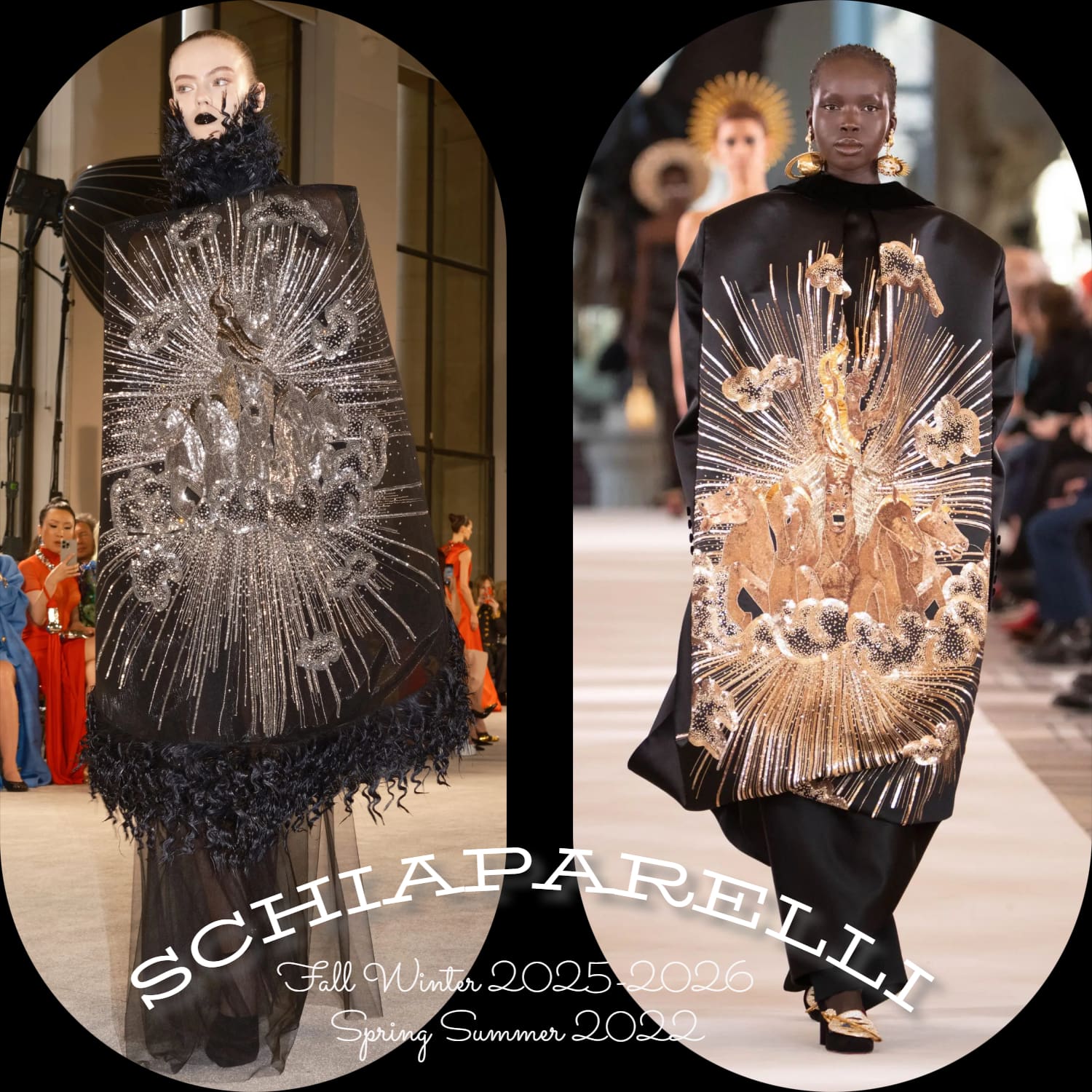
On the left Schiaparelli Fall Winter 2025-2026.
On the right: Schiaparelli Spring Summer 2022.
The Crow and the Cardi Effect
Let’s begin with Cardi B — an apparition staged to generate headlines rather than ideas. Draped in a sculptural piece from a past Schiaparelli couture show, complete with mountainous curves and an ominous crow clutched to her hand, her presence felt symbolic — albeit inadvertently so. Was she a metaphor for creative exhaustion? A harbinger of doom cloaked in velvet? One could be forgiven for interpreting the entire collection as an extension of that very look: heavy, theatrical, and devoid of new life.
The Heartbeat of a Hollow Future
The show opened with a spectacle — not of elegance, but of alarm. A mechanized, anatomically correct human heart, encased in jewels, pulsating with rhythmic precision. It wasn’t symbolic. It wasn’t poetic. It was clinical.
One might have expected a couture gesture of intimacy — a nod to emotion, perhaps. Instead, the audience was greeted by something between a cardiology diagram and a horror film prop. Set into a black dress, heavy and literal, this enormous organ throbbed on the chest like a wearable post-mortem. Elsewhere, the same heart reappeared again — this time on the back, pumping away as if couture had entered its own afterlife.
Surrealism, when reduced to mechanics, loses its surreal. What remained was discomfort — and a slightly queasy sense of misplaced ambition.
Backwards Bodies and Violated Forms
If the pulsing heart startled the audience, what followed blurred the line between confusion and parody. A red dress — exaggerated in hue, deliberately molded — arrived turned backwards.
The back of the gown bore sculpted female breasts and a protruding belly, as though the female body had been physically reversed and reattached in error. Was this a comment on gender? On duality? On disruption? Perhaps. But none of it was clear — only the grotesque literalness of form folded in the wrong direction.
There is a difference between challenging perception and mutilating proportion. This wasn’t surrealism. It wasn’t even provocation. It was distortion without depth — a backward glance masquerading as conceptual thought.
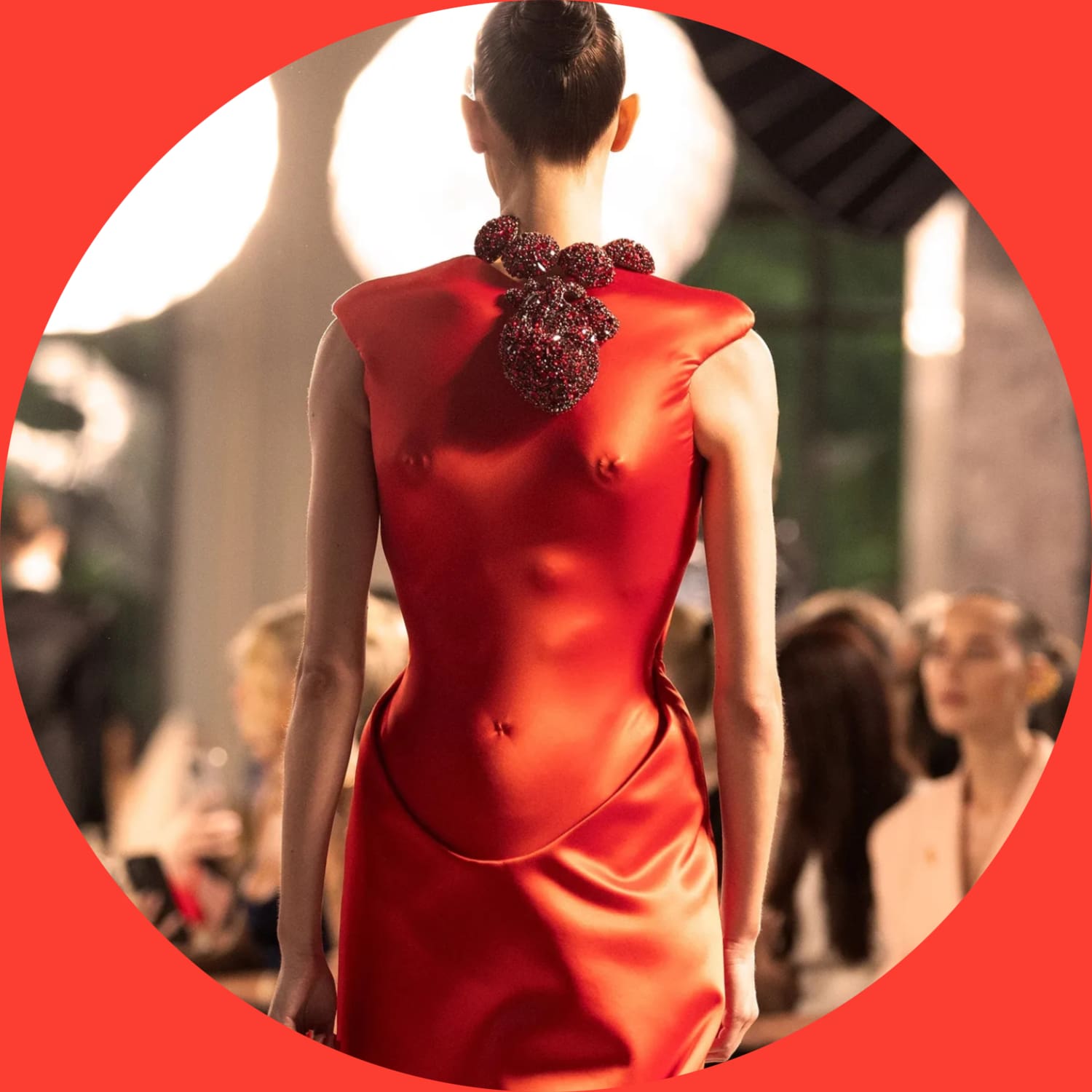
A Palette of Absence
In a rare moment of clarity, Roseberry described this collection as “deprived of color, or any notion of modernity.” That, at least, was accurate. The show, conceived in black and white, shades of gray, and red offered a visual void dressed up in historical allusions — matador jackets, corset-free gowns, Donegal wool — and called it futuristic.
But stripping new ideas does not reveal essence. It reveals vacancy. Fashion, like language, must evolve to remain relevant. Repetition — even when polished — cannot masquerade as revelation.
Post-Future, Pre-Idea
“I’m proposing a world without screens, without AI, without technology,” Roseberry said. “An old world… but a post-future one.”
It’s an ambitious idea. But as the saying goes: the map is not the territory. To reject the present does not automatically lead to the future. The collection offered no tension, no friction, no exploration. It merely turned garments around, removed structure, and invited us to believe this was subversive and somewhat surrealistic.
But subversion requires risk. And this collection took none.
Final Notes
The “Crow B” loomed overhead; the “Backward Drift” dragged behind. What was presented as prophecy was, in truth, a mirror — held up not to the future, but to the designer himself.
Schiaparelli’s Fall-Winter 2025-2026 was not a confrontation with time, nor an evolution of form. It was a loop. A folding into personal mythology. A procession of déjà vus dressed as revelation.
When fashion ceases to invent, it becomes its own relic.
This was a curated exit and indeed a farewell.
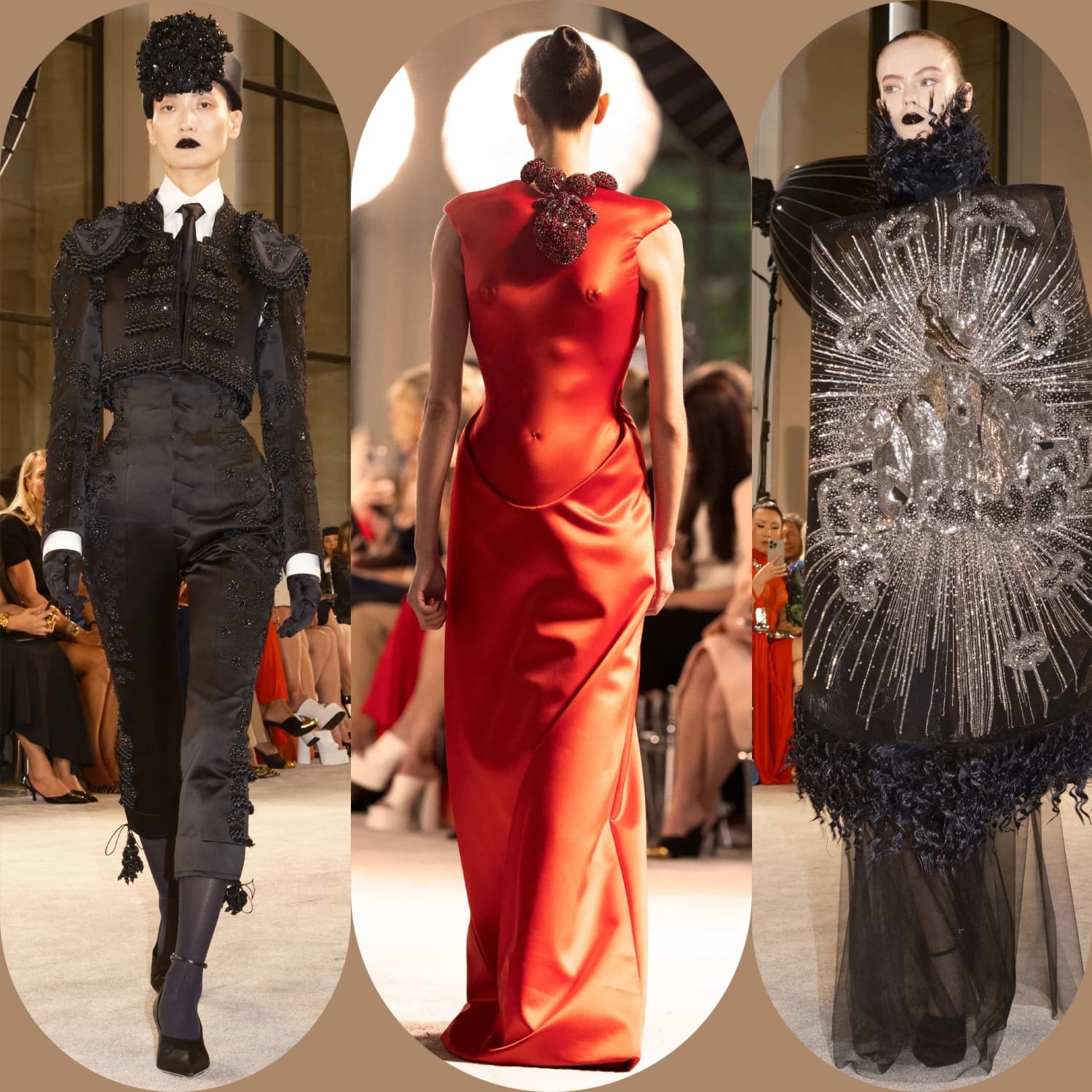
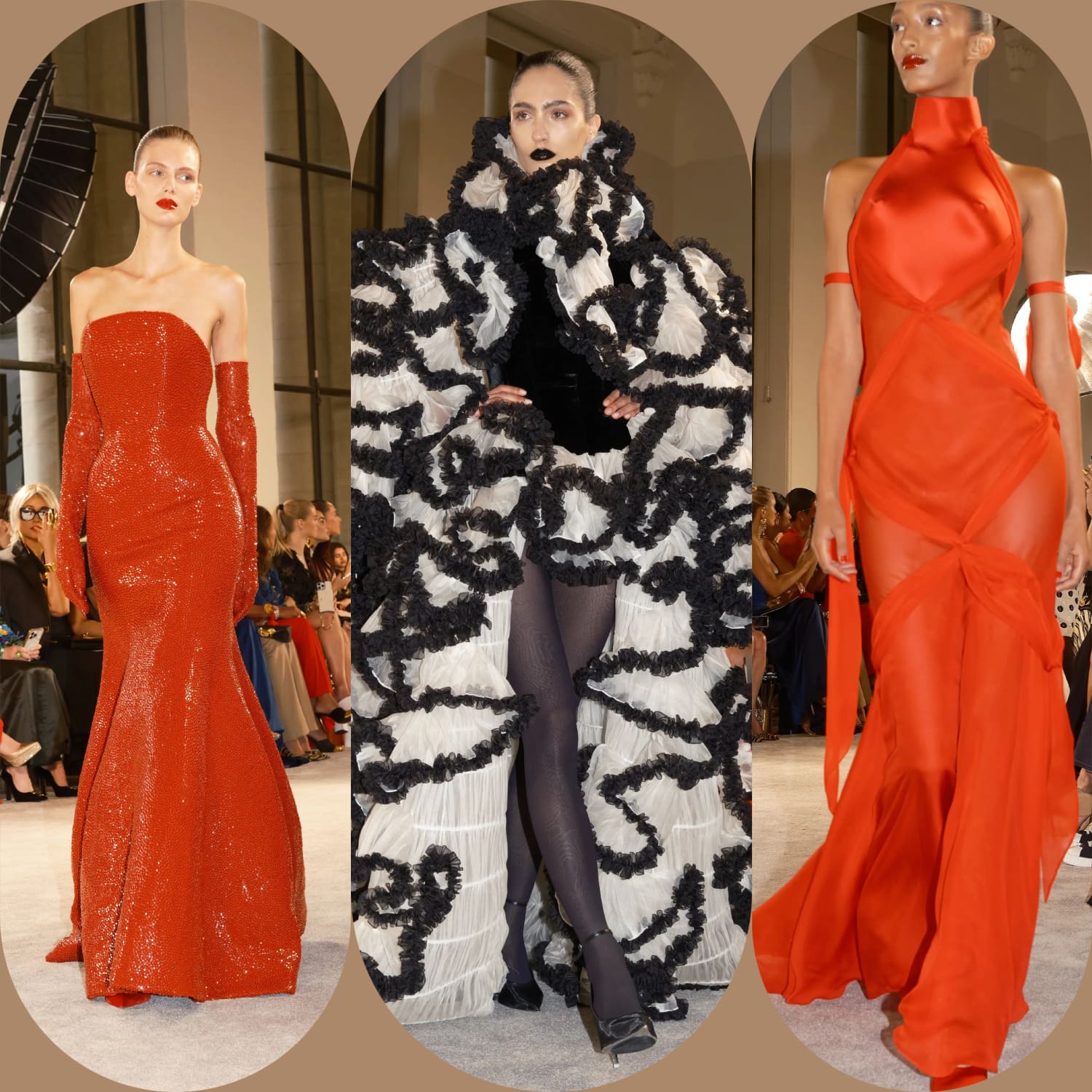
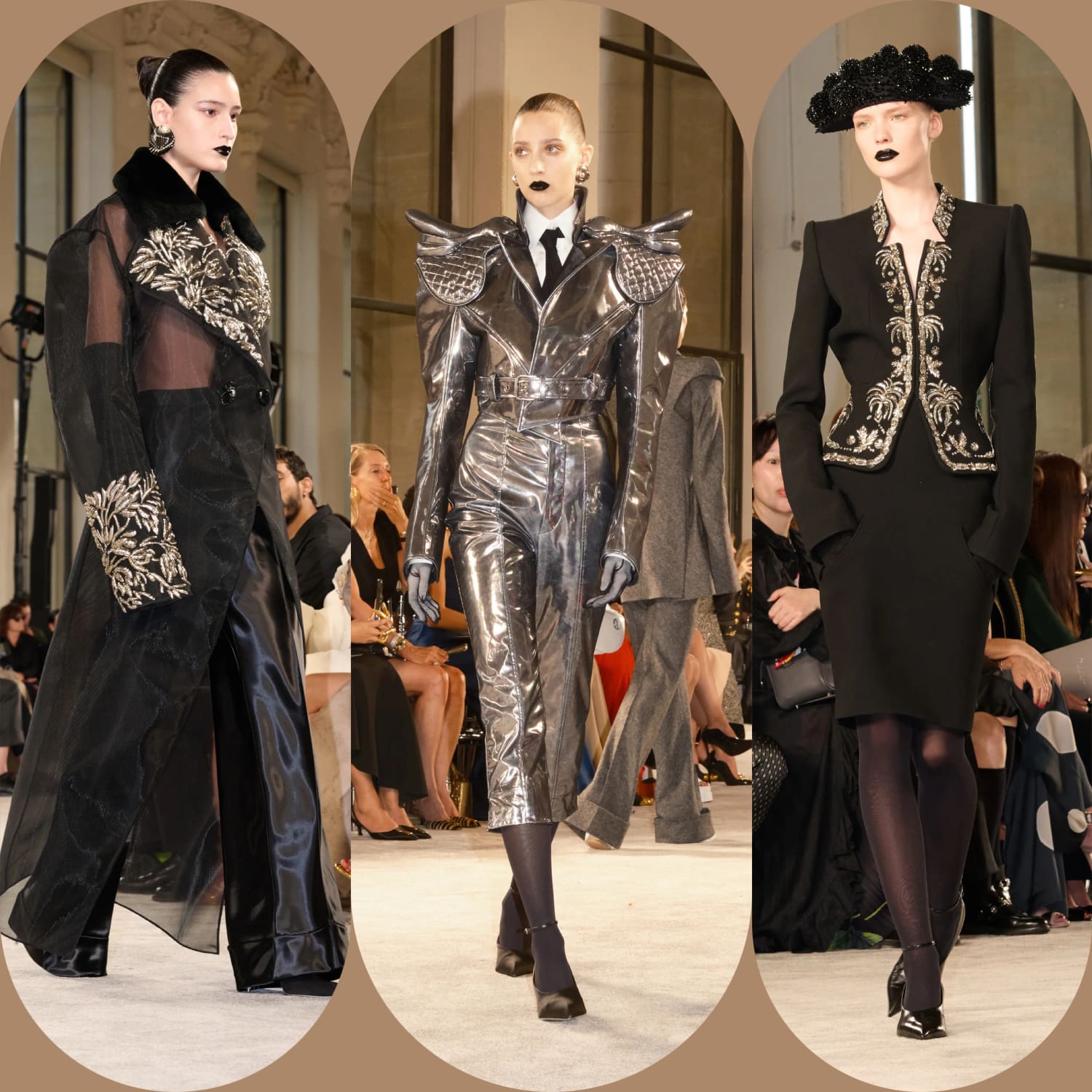
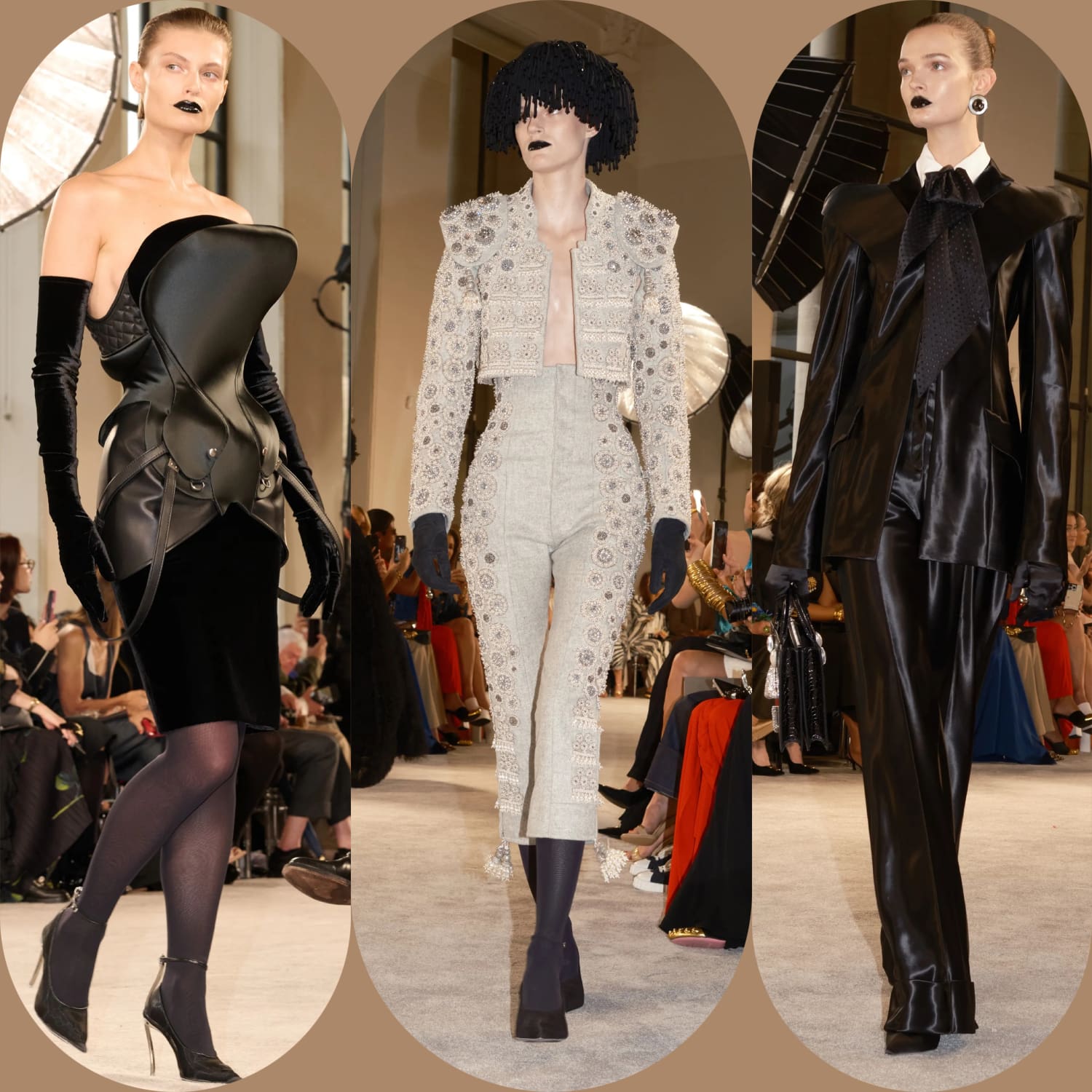
See All Looks Schiaparelli Fall-Winter 2025-2026 Haute Couture
